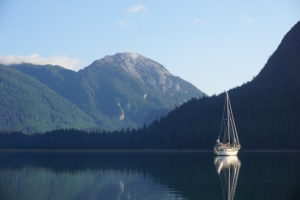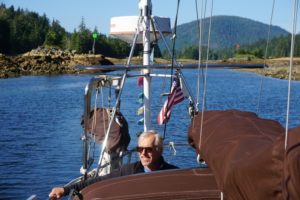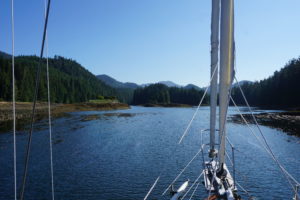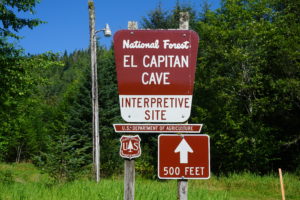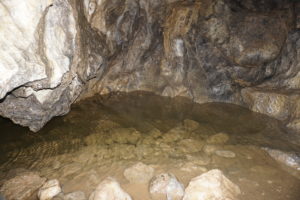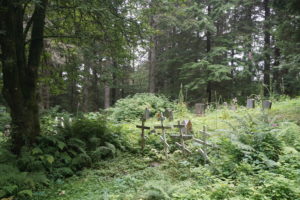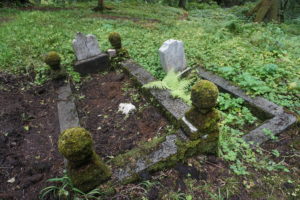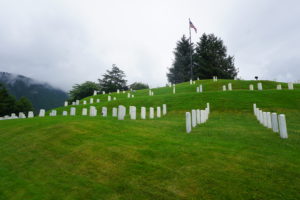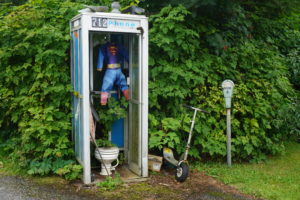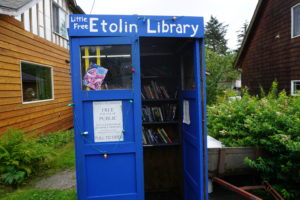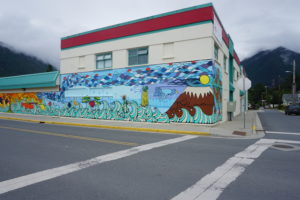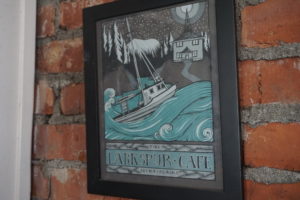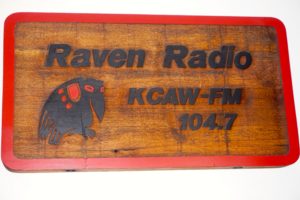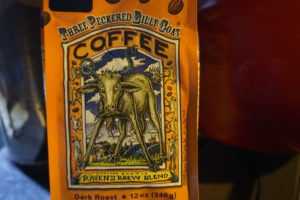We wandered southeast from Durango, Colorado and crossed into New Mexico as it started to get dark. After Aztec and Bloomfield we started to get hungry. The map indicated about 80 miles across empty high desert to Cuba, without an indication of a developed campground. Then, seemingly out of nowhere there was a little brown sign for Angel Peak Scenic Area, it even had the tent symbol for camping. We turned off onto a dirt road. hard-packed and heavily rutted.
It was dark and windy, scrub brush showing intermittently in our headlights on the ochre sand of the high desert. After a couple miles we came to a little dirt pull out marked Badlands Overlook but we saw one pickup with a camper there and so we kept going. All the rest of that night we did not see sign of another vehicle.It was dark as could be but it seemed there was a little rise to our left as we crawled along. We saw another sign indicating the campground somewhere up ahead but after 5-6 miles and passing a couple other picnic areas we decided that the Castlerock Overlook would suit us just fine. There was a little picnic table and a shelter built over that, it was nicely done. We shut off the engine and set up camp.
In a VW “Westy” camper setting up camp, means raising the pop top if you want some head room and pulling the curtains shut if you want some privacy. Also, since we were hungry we had to pull out the frying pan and set it on the stove top. It was too windy outside to worry about a fire so I didn’t try to find any firewood but I did pop another kind of top, the one on my beer, and stepped outside to see what I could see. First thing I “saw” was a noise, a sizable diesel engine not far away droning away at its labor. I thought this might be related to all the oil and gas development infrastructure we’d seen driving in, but wasn’t sure. I walked a few feet away from our bus and I could see there was a definite drop off, lights were twinkling in the distance and far below. It seemed we were on the edge of a bluff looking down on the San Juan Basin. The clouds were dark and low, no stars and no moon. It wasn’t very cold but there was a lonesome feel on the breeze..
The rain came heavy and sudden a little after midnight preceded by thunder and lightning as a cold front moved through. After a little while it got quiet again and I drifted back to sleep. Early in the morning I awoke and thought not for the first time that I should upgrade to a warmer sleeping bag one of these days. I got dressed and stepped outside onto the crunch of a dusting of fresh coarse snow. The wind was biting but I walked into it towards the drop off and saw a Badlands landscape. The sun was not quite up but I could tell there were many bands of different colored rock stacked up in other worldly towers and pyramids and indescribable shapes. The sight and the wind was almost enough to take my breath away but when I turned back to the van I glanced up towards the light in the east and saw something I’d never seen before. There, circling high above in a tight gyre, were two enormous birds. I had recently spent several months in Alaska and British Columbia and know what eagles are. These were much bigger. I wondered if they were condors but I had never heard there were condors in New Mexico.
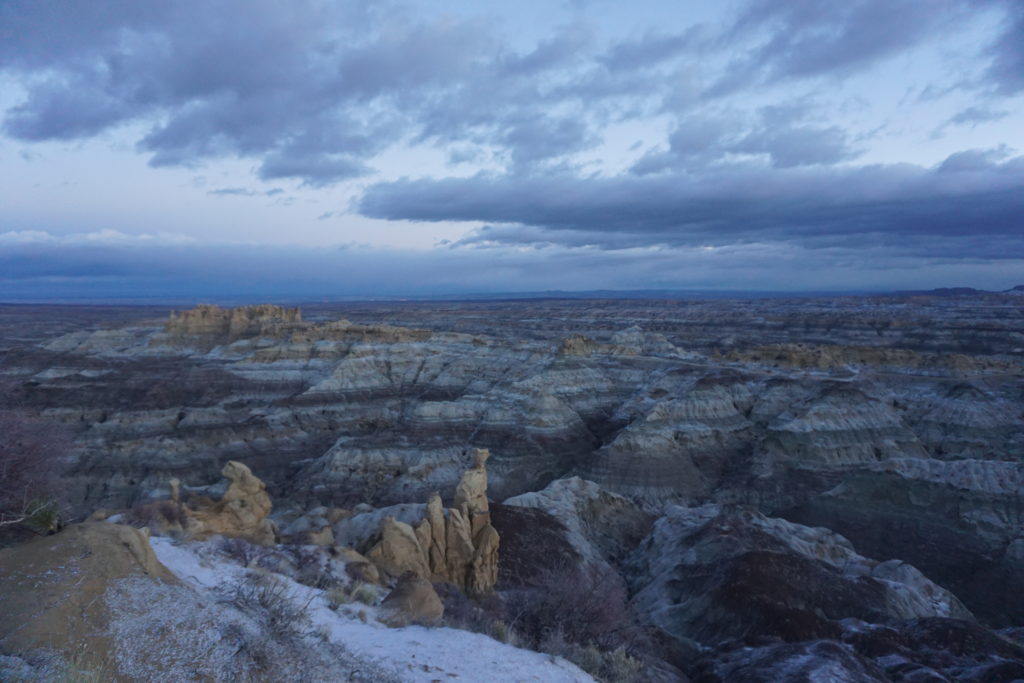
By the time I had retrieved my camera from the van they were gone, and I wondered, had I really seen them? However, the sun was starting to light up the rock formations and I wanted to get some pictures so I put the condor conundrum out of mind. I did keep looking over my shoulder, however, I didn’t see them again. Some time later though, my wife Karen came to find me and when she did she excitedly told me about this enormous bird she’d seen, far bigger than an eagle she said. I didn’t say anything but pointed out to her the glowing vertical spires now alit by the rising sun and contrasted against the shadowy gray and lavender layers below. At that moment all questions of what was real fell away leaving the experience of the moment. We had stumbled into the magic of the Badlands.

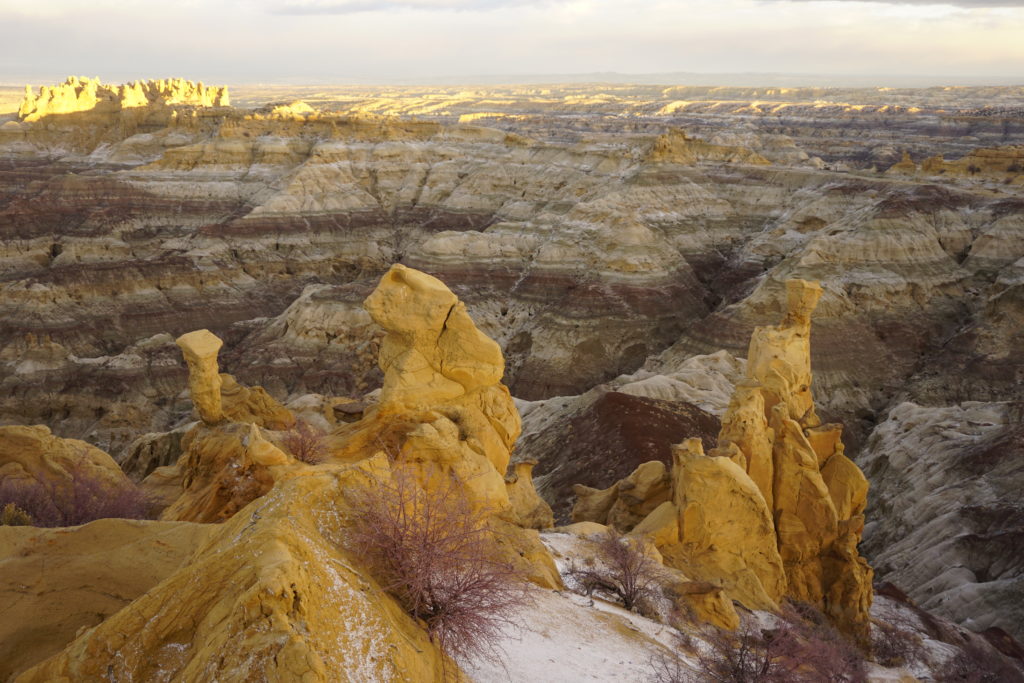
Without realizing it we had also wandered into the San Juan Basin, one of the most productive natural gas areas in the country. Here right in the midst of unreal beauty the machinery of extraction was ceaselessly pumping and lifting the precious gas up from subterranean rock to the surface for processing and transportation to all us energy hungry Americans. Extending from Durango, CO in the north and down almost as far as Albuquerque, the San Juan Basin encompasses some 4600 square miles. It contains the 2nd largest proven gas reserves in the U.S. and produced some 750 billion cubic feet of natural gas in 2013. In 2001 the region produced about 30% of the nation’s consumption but this dropped to about 4% in 2015 due to cheaper gas extraction from the Marcellus region.
The San Juan Basin is also the location of a huge hot spot of methane pollution discovered in 2014 by NASA researchers. Methane makes up about 95% of natural gas and is colorless and odorless (the stinky odorant, mercaptan, is added later in the production process) and it dissipates rapidly into the atmosphere making detection with human senses difficult. Methane is about 80 times more potent than CO2 in short-term global warming. This was this an incredibly important scientific finding.
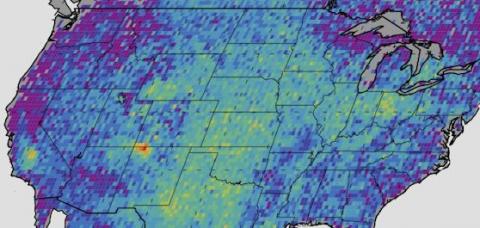
According to a 2016 study published by the Center for American Progress, oil and gas producers leaked the CO2 equivalent of 14 coal-fired power plants over a year period. NASA researchers zoomed in to analyze where exactly the leaks were coming from and analysis of this data suggests only 11 companies account for half the problem. Wells in the San Juan Basin have the highest amount of emissions per well.(https://www.americanprogress.org/issues/green/reports/2016/06/20/139709/the-whos-who-of-methane-pollution-in-the-onshore-oil-and-gas-production-sector/) It should be noted this type of science is exactly the thing that Republicans in congress are working to quell. The image of extinction-threatened ostriches with their heads buried in the high desert sand comes to mind.
Heading south from the AngelPeak badlands you come very shortly to Chaco Canyon Culture National Historical Park. We’d never been here, hadn’t even heard of it so of course we wandered out that way. After enduring some of the worst washboarded roads I’ve been on we finally made it. There, carefully uncovered by archeologists are the ruins left from a people that thrived here for more than 400 years, from about 800-1200 A.D. It is thought that they died off or dispersed due to extended drought conditions. Although the people were gone the lesson left in that sandy, dry lonesome place remains for all to see if you take the time.
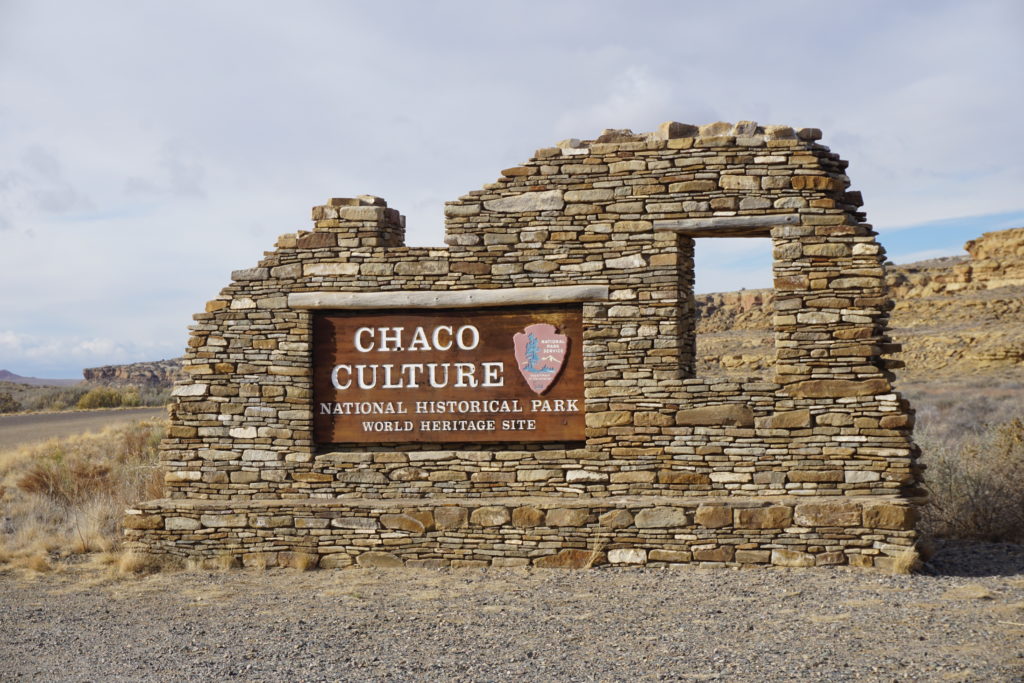
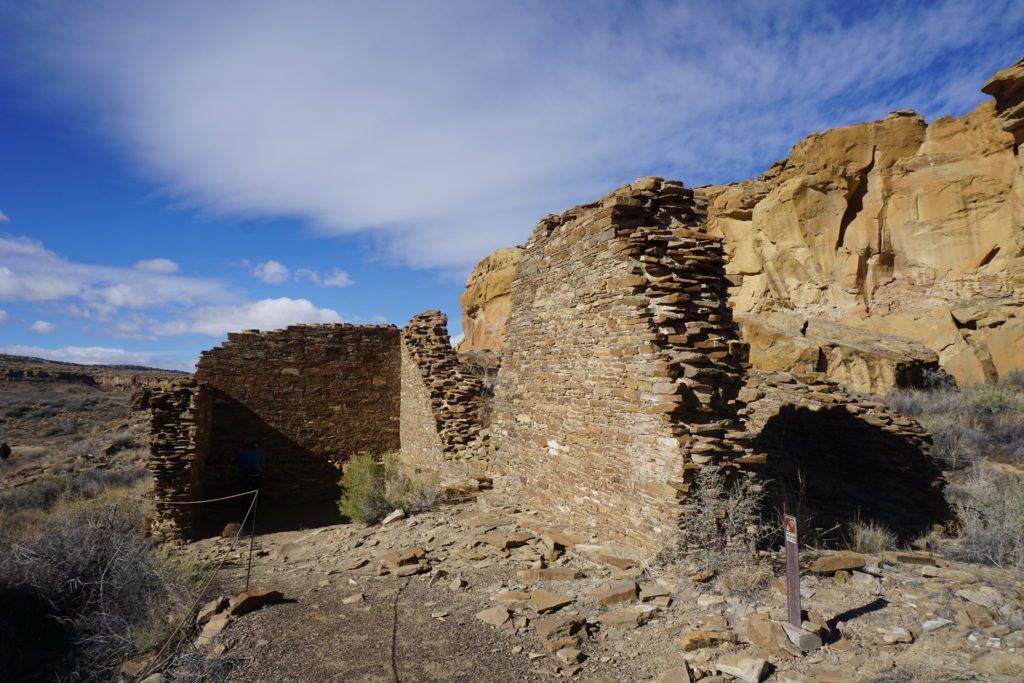
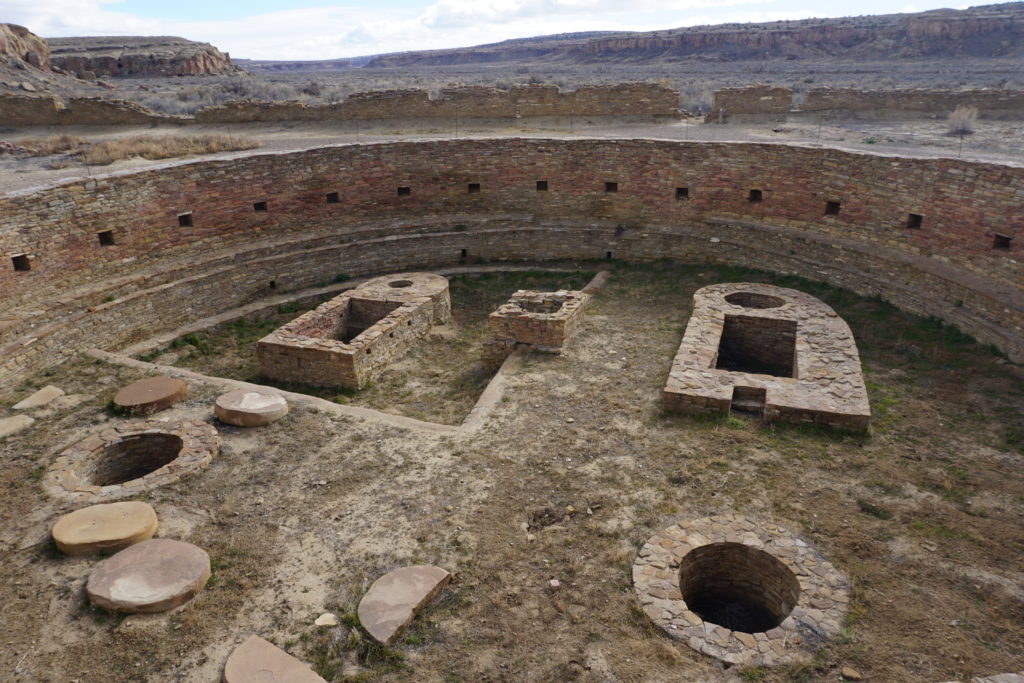
While just a few miles up the road modern humans experiment with hydraulic fracturing and technology to extract every last drop of oil and gas, here at Chaco Canyon a great civilization exceeded the capacity of its environment to sustain it. Climate deniers in congress are working to shut down the science that warns us of impending mega drought conditions across the southwest, and to remove cumbersome regulations hindering fossil fuel developers. Meanwhile in dusty, windy, abandoned places like Chaco we can hear the echoes of our ancestors whispering a warning.
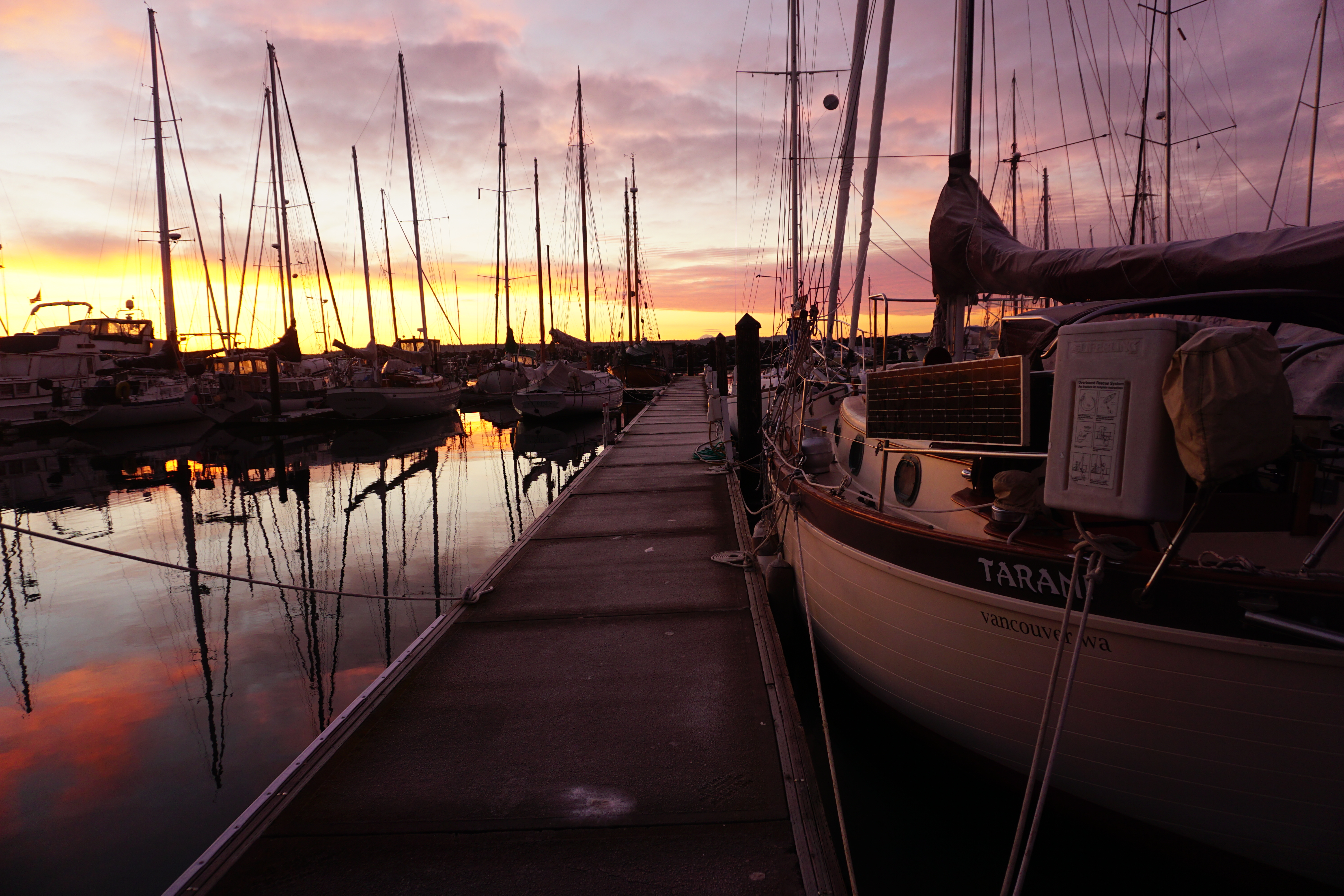
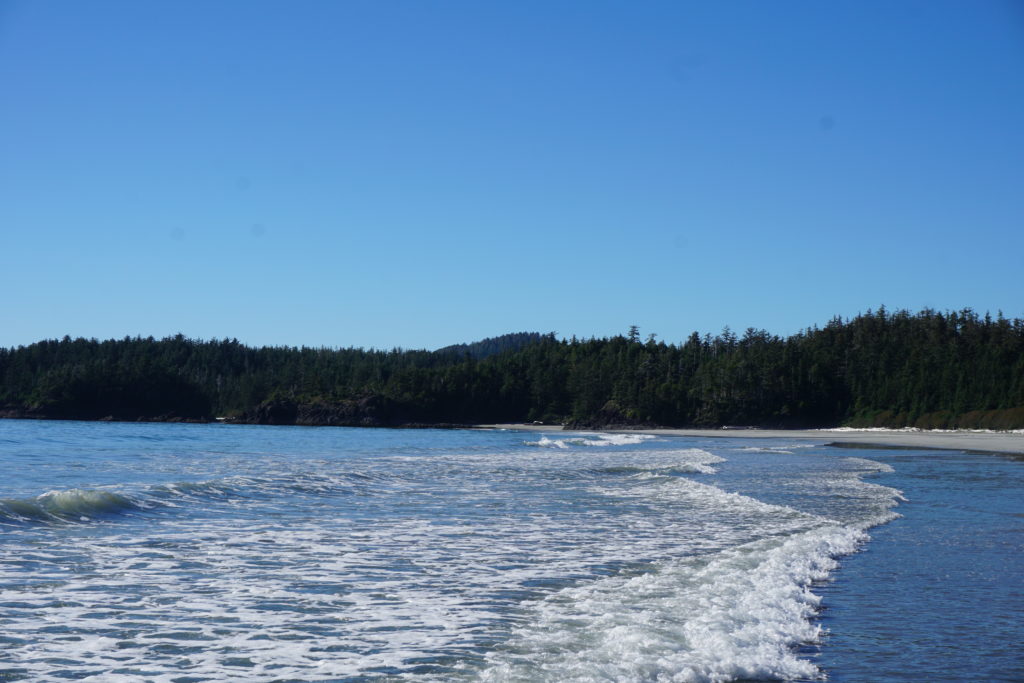
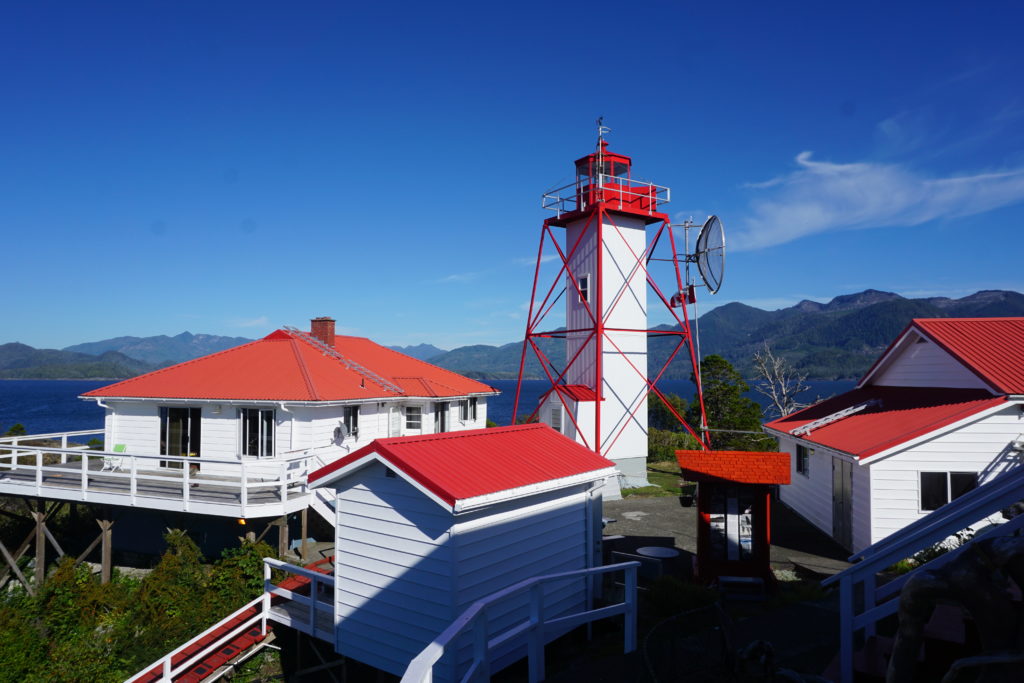
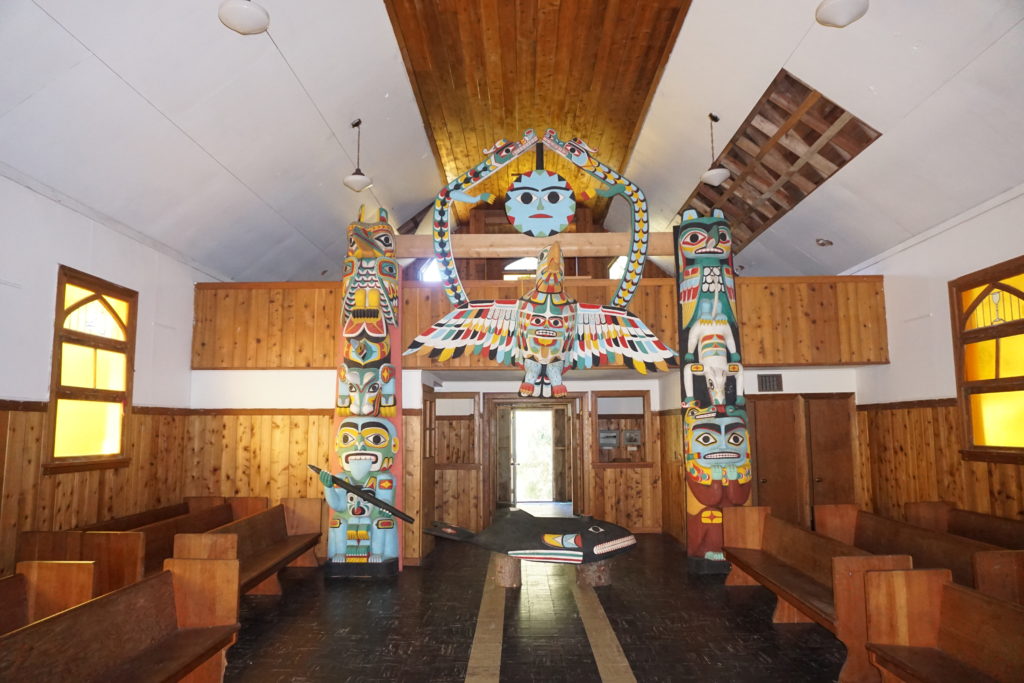



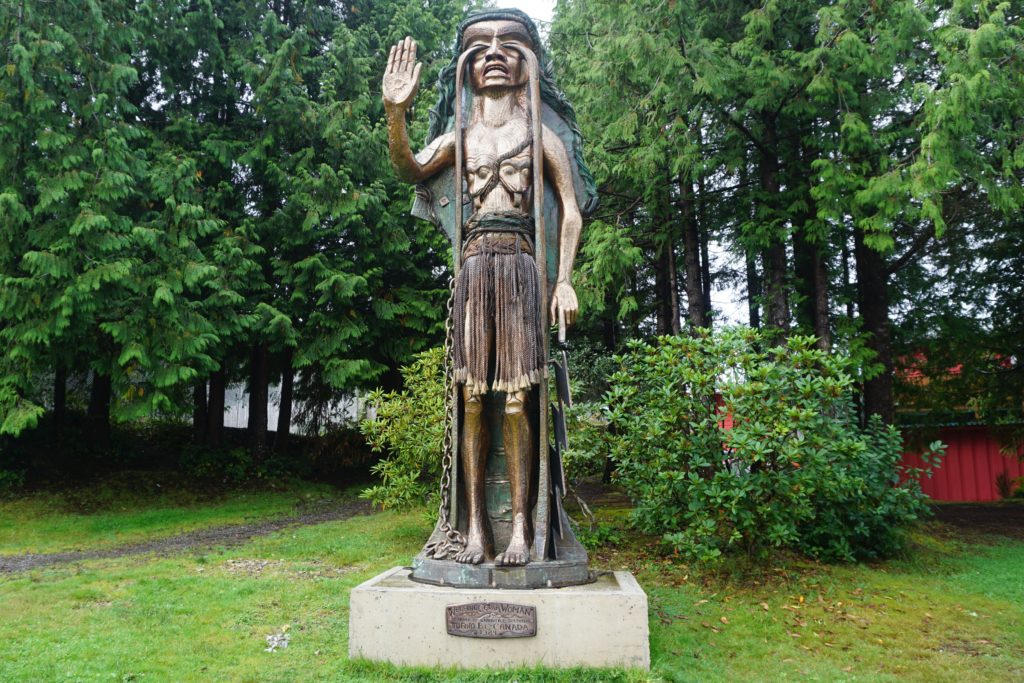

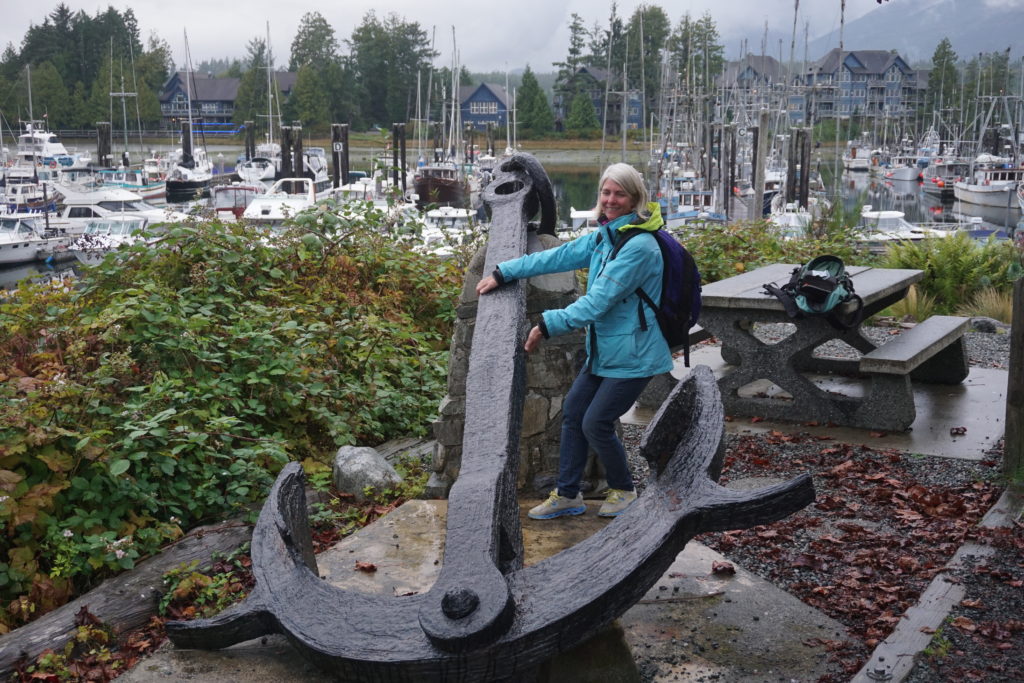
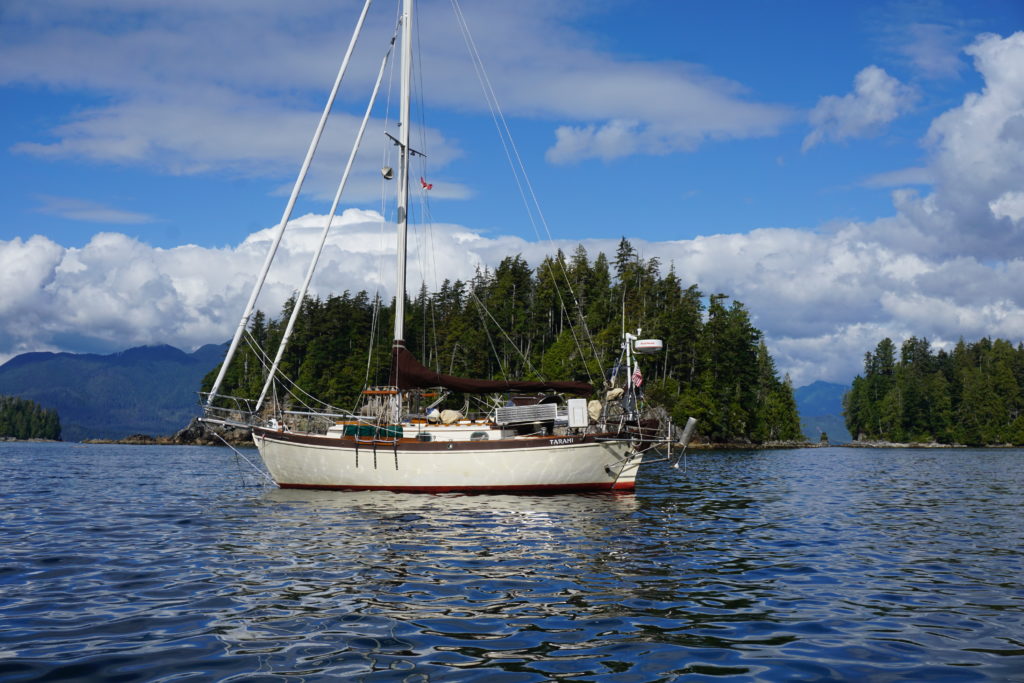
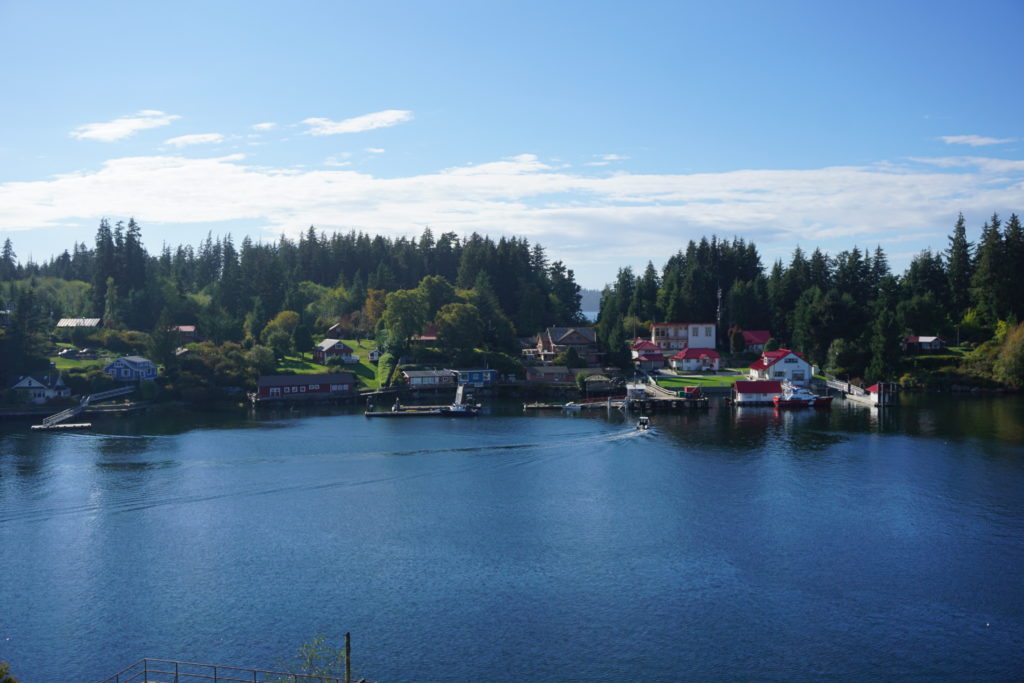
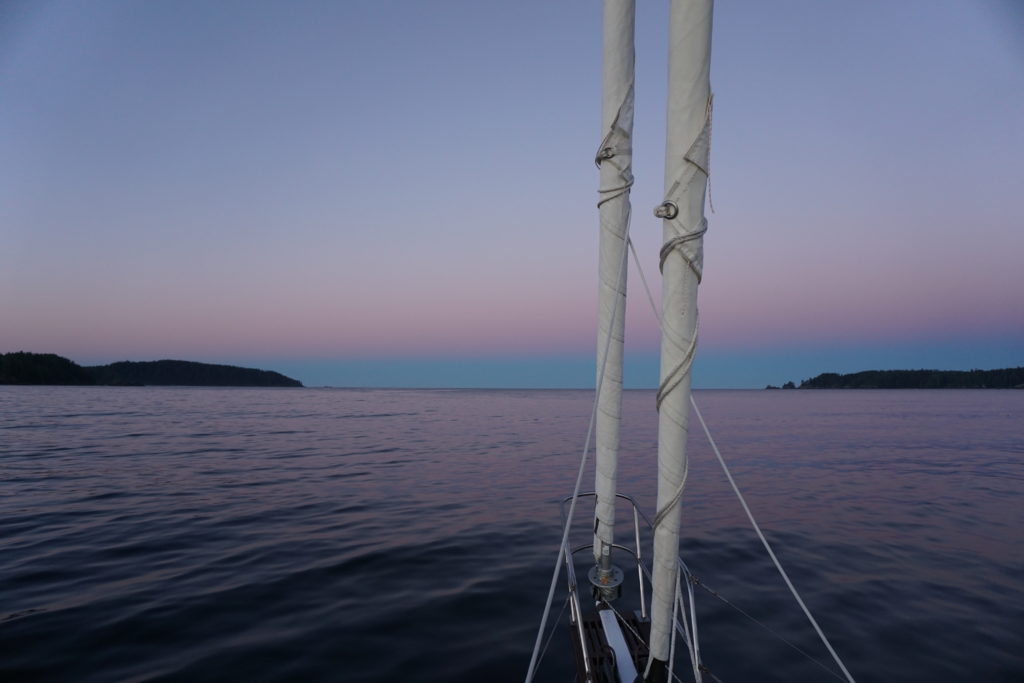

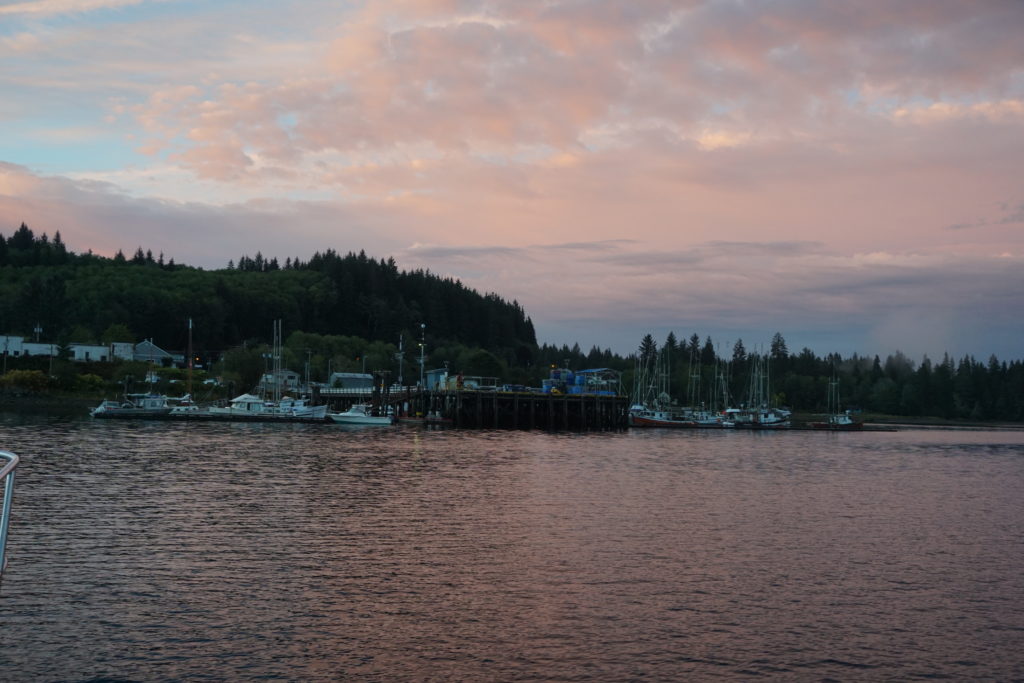
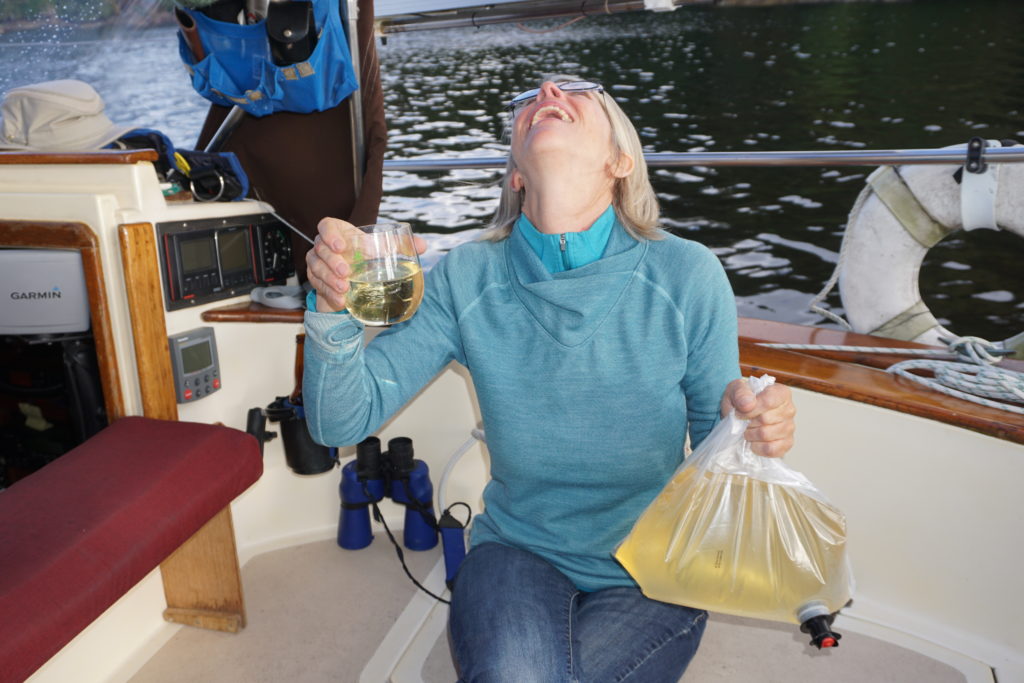
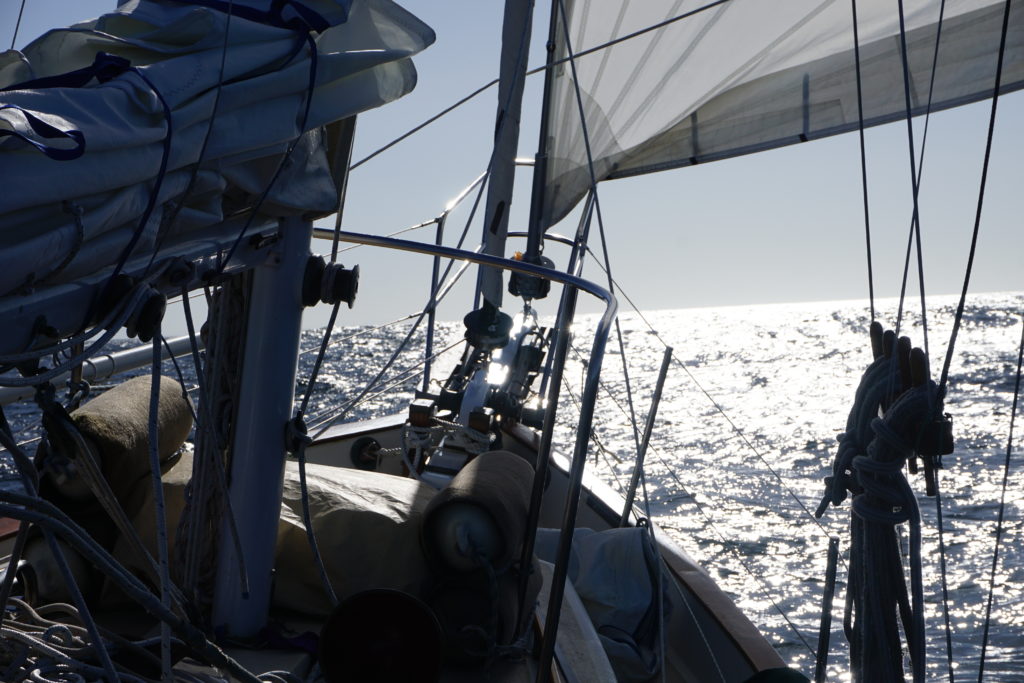
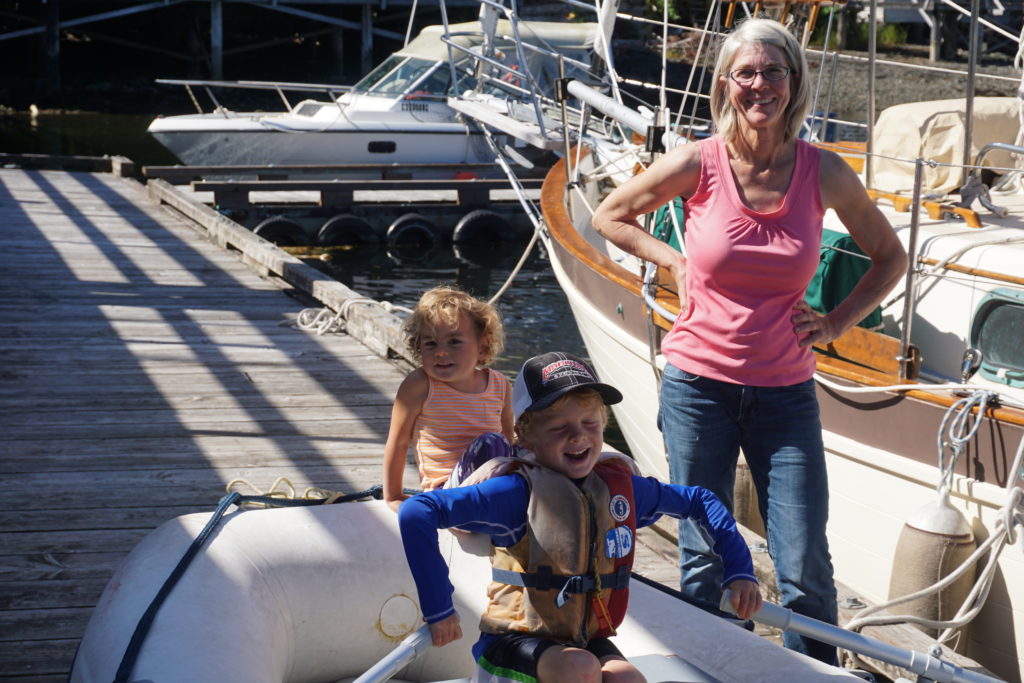
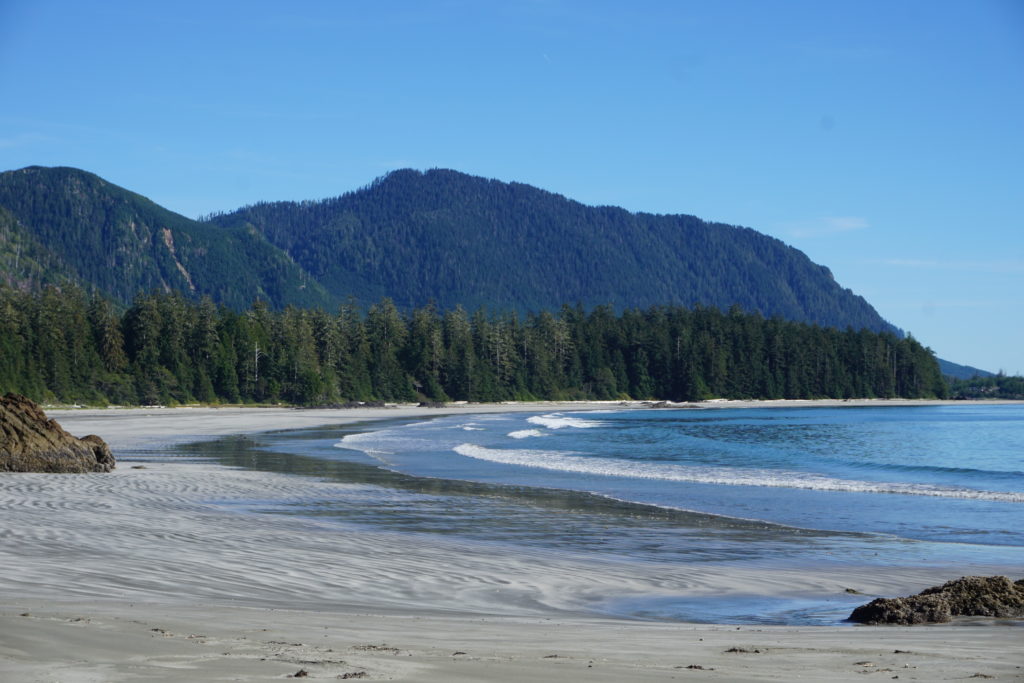
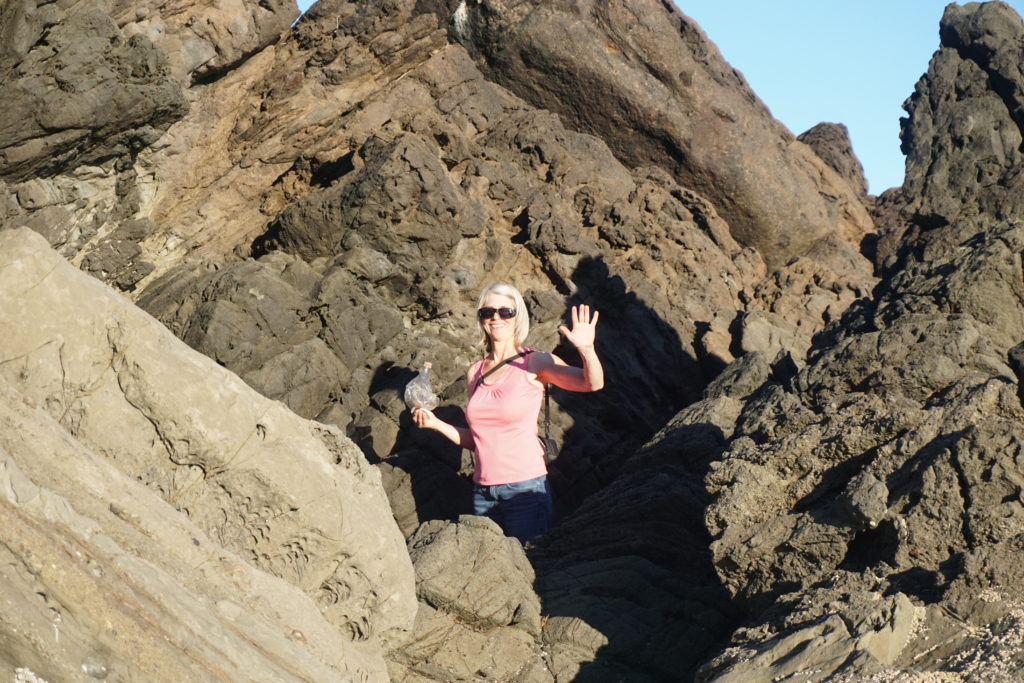
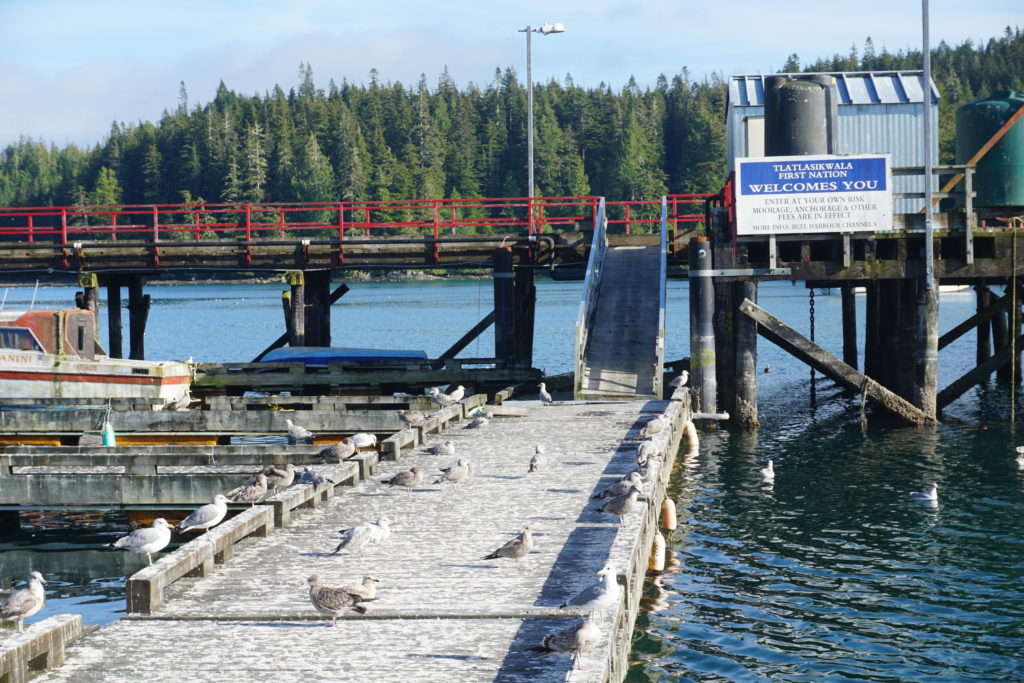

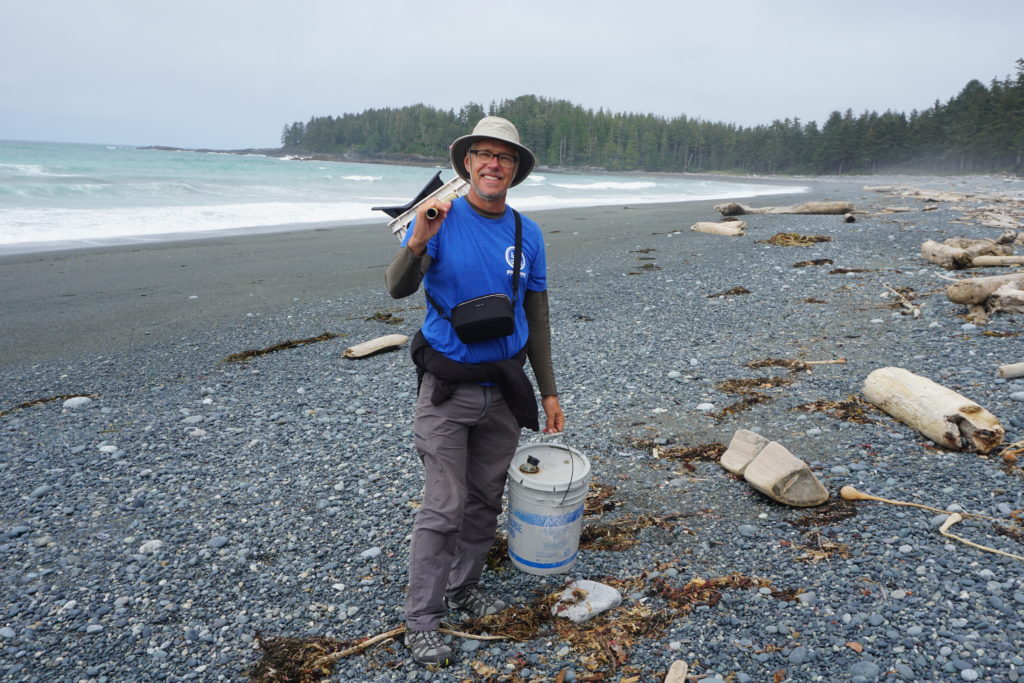
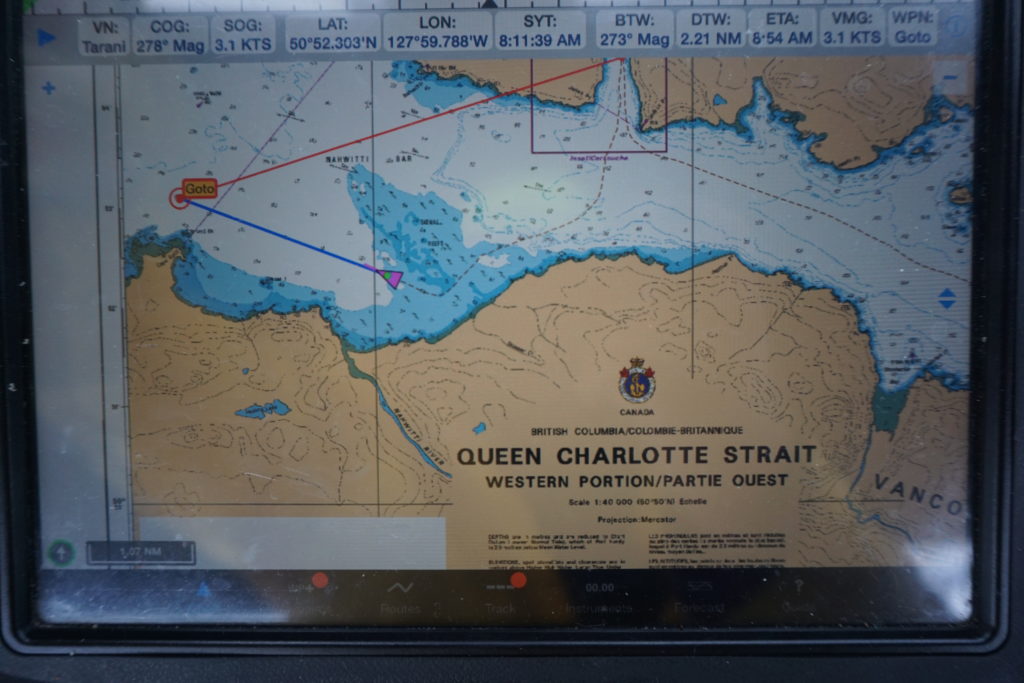
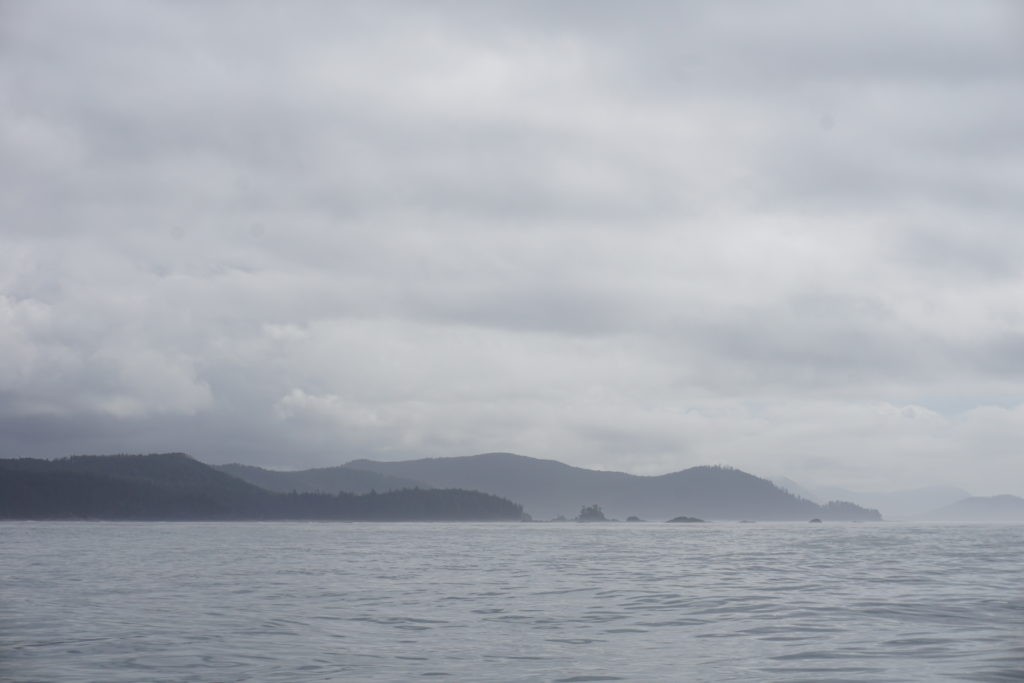
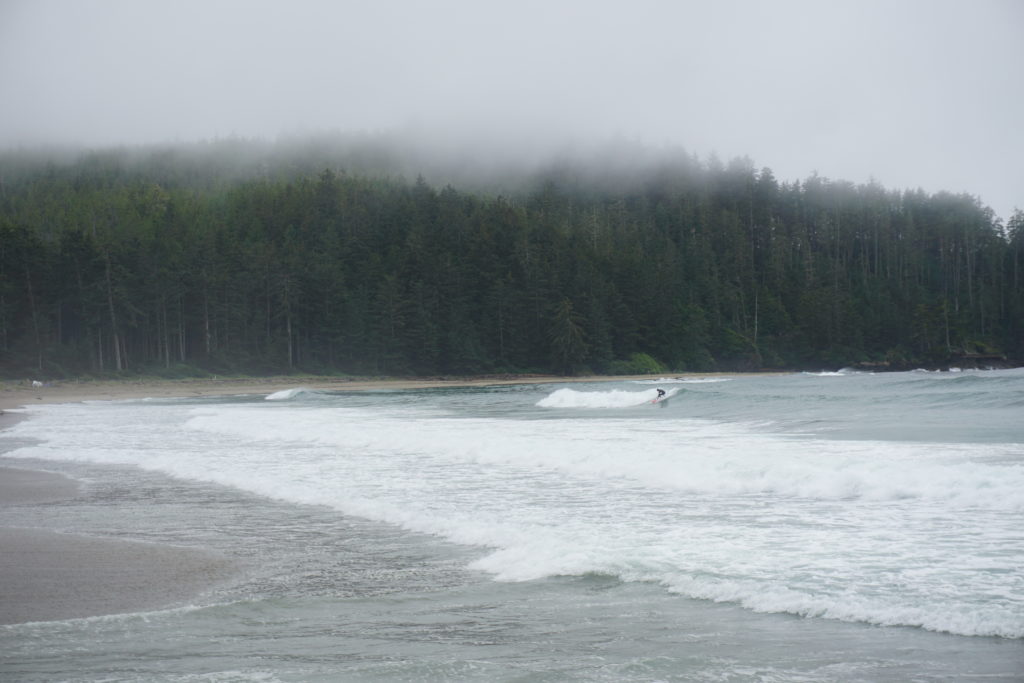
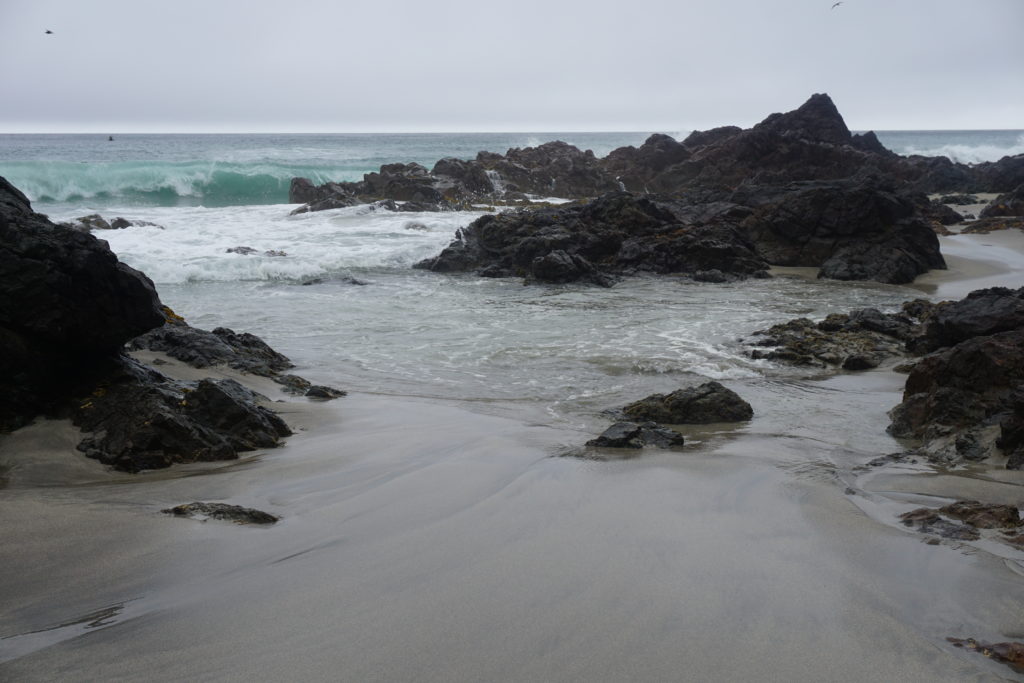
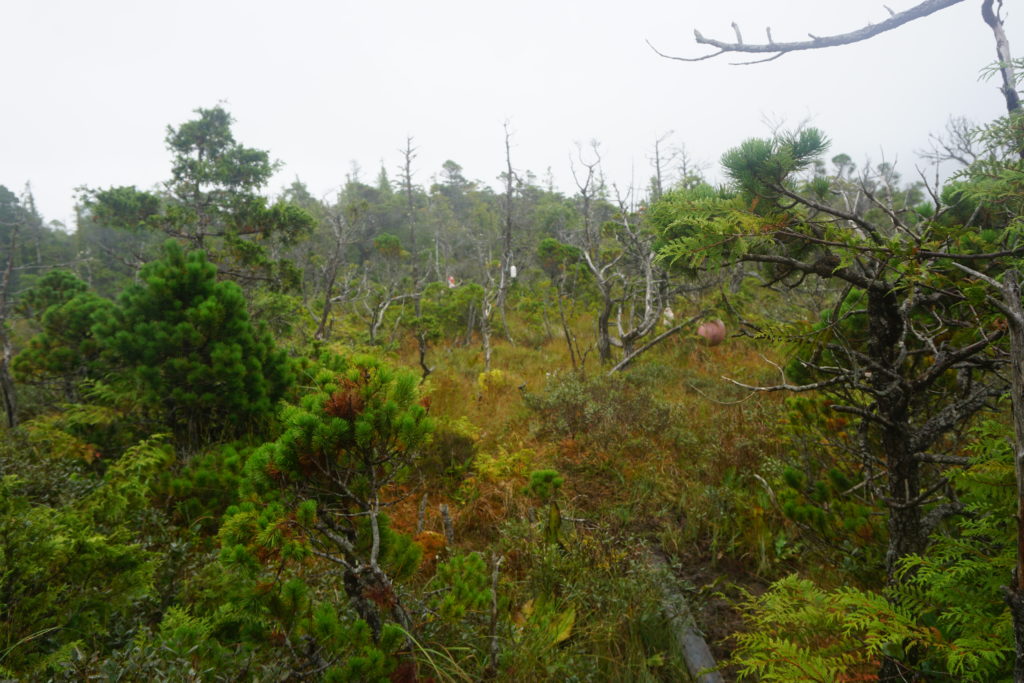
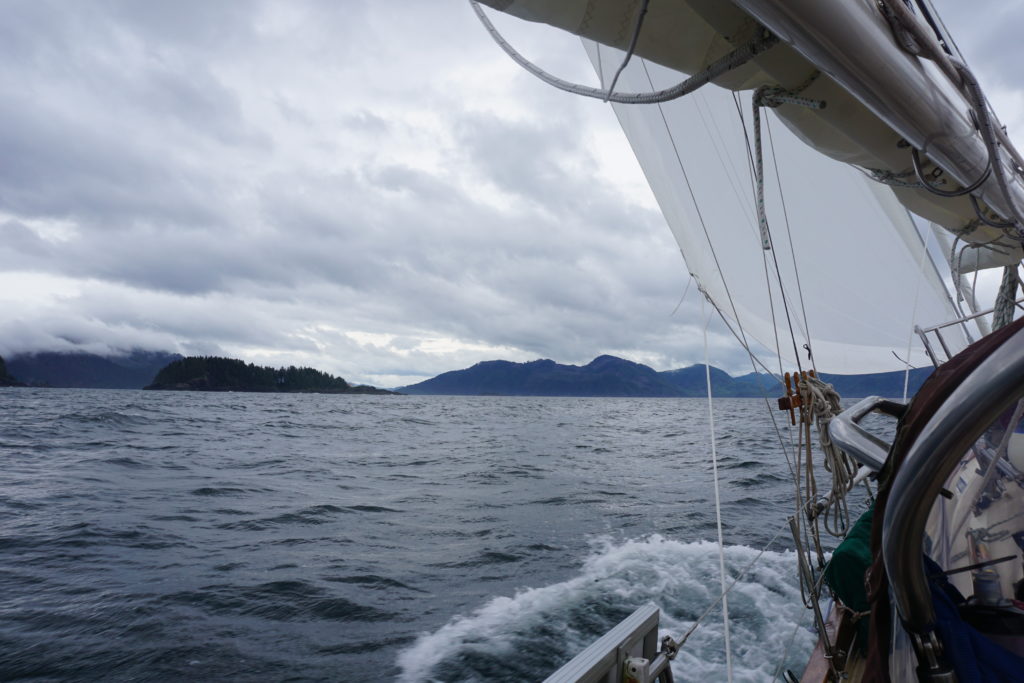

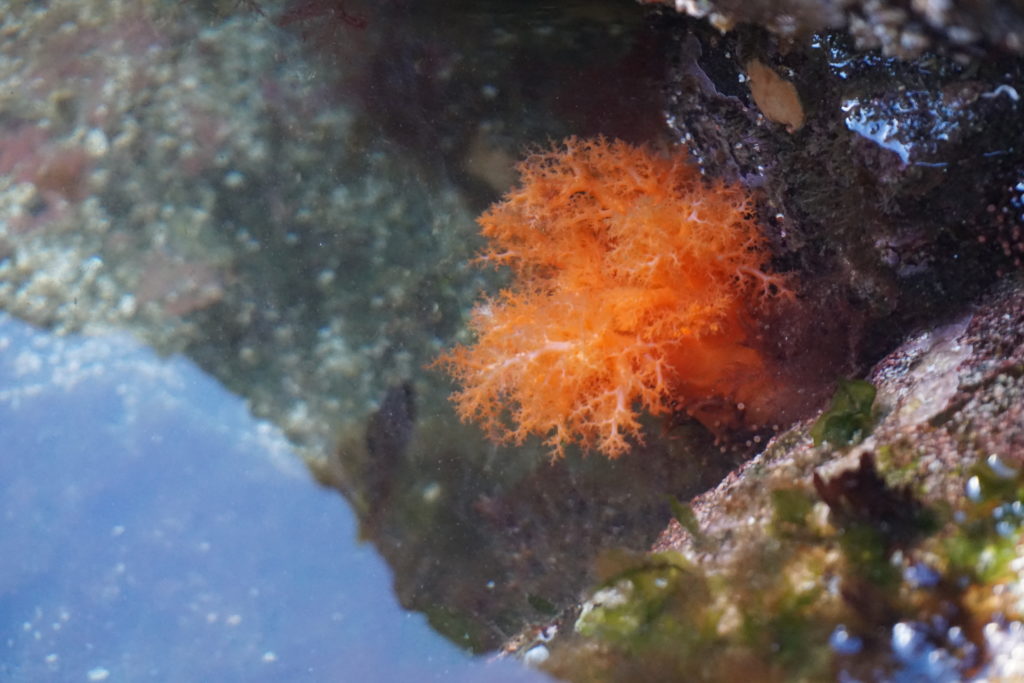
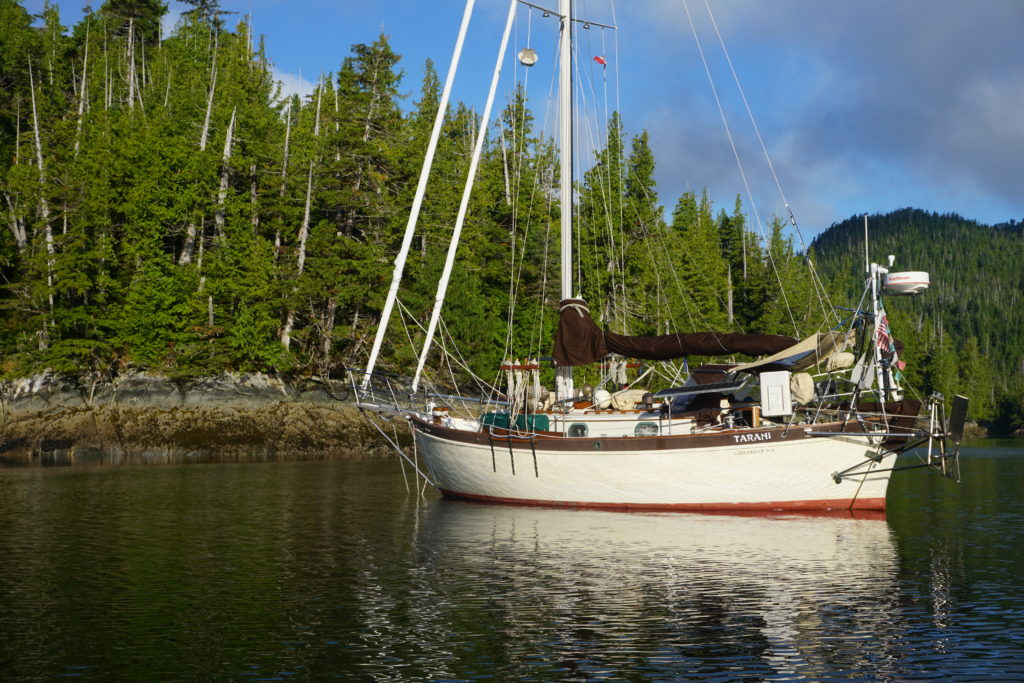
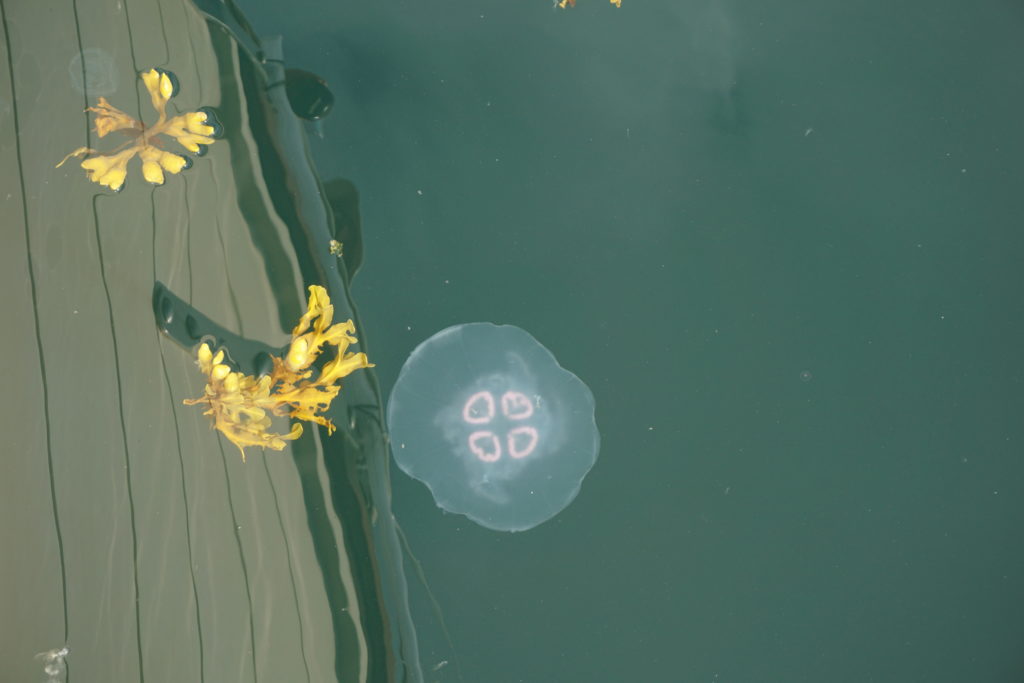
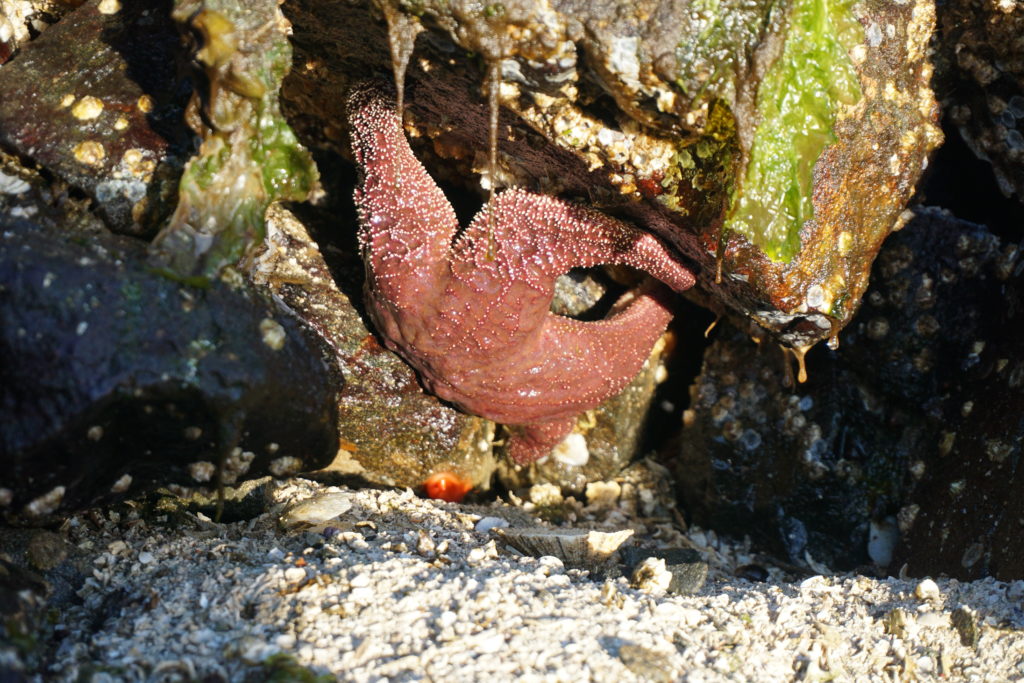
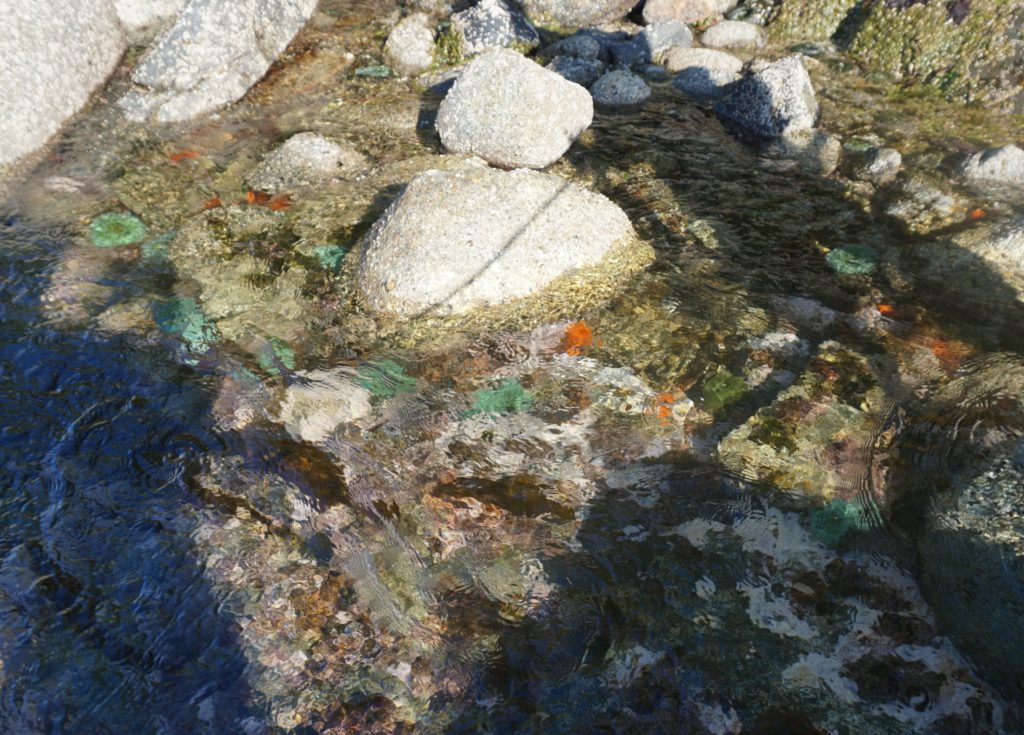
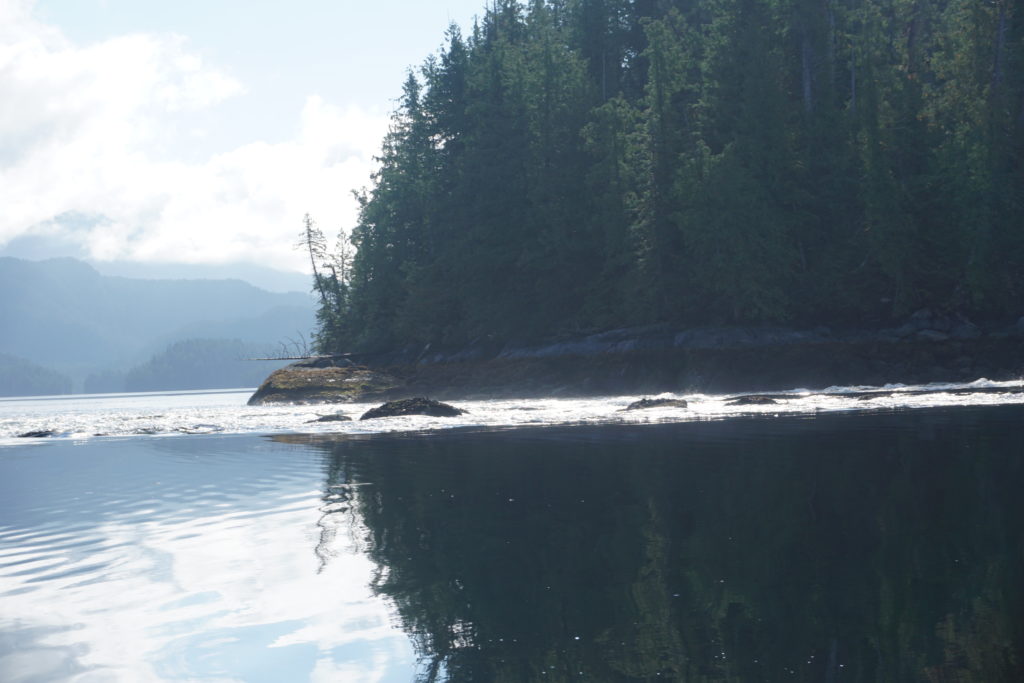
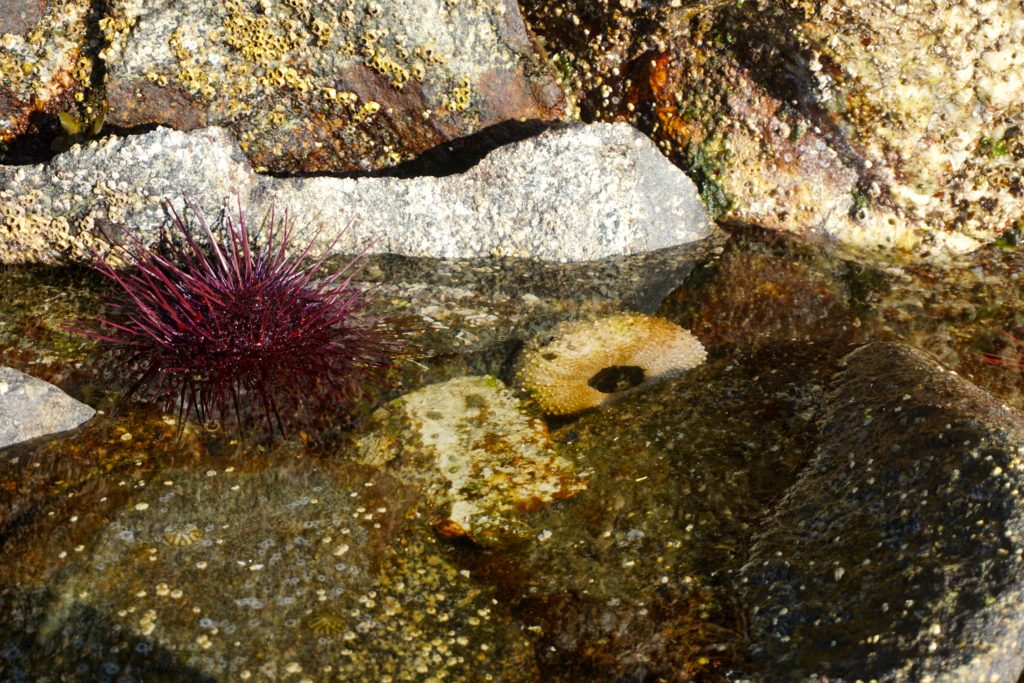
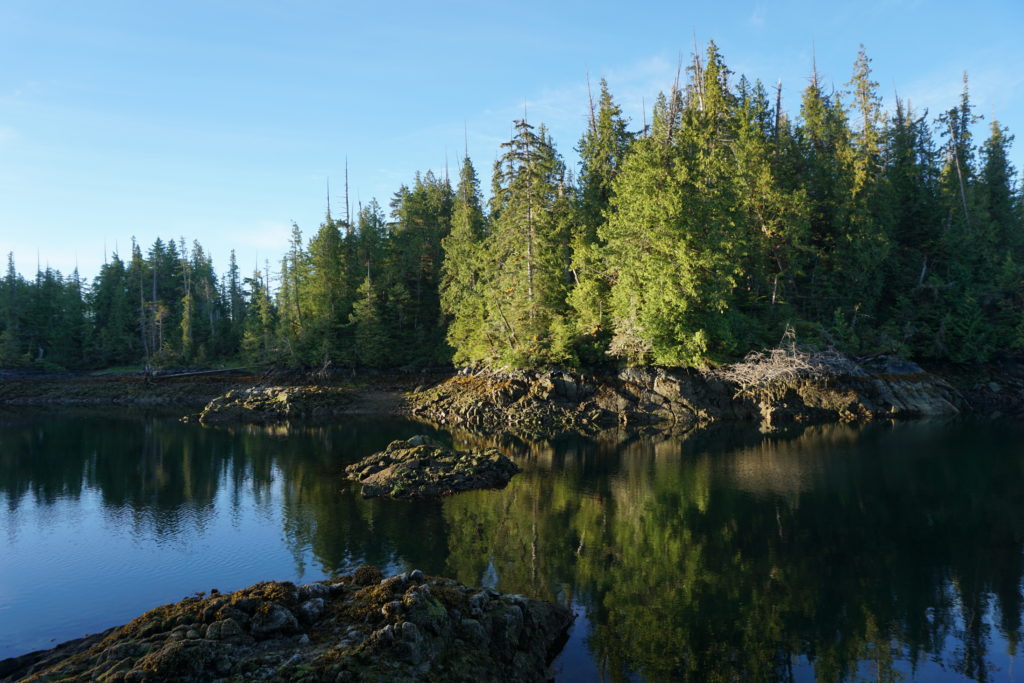
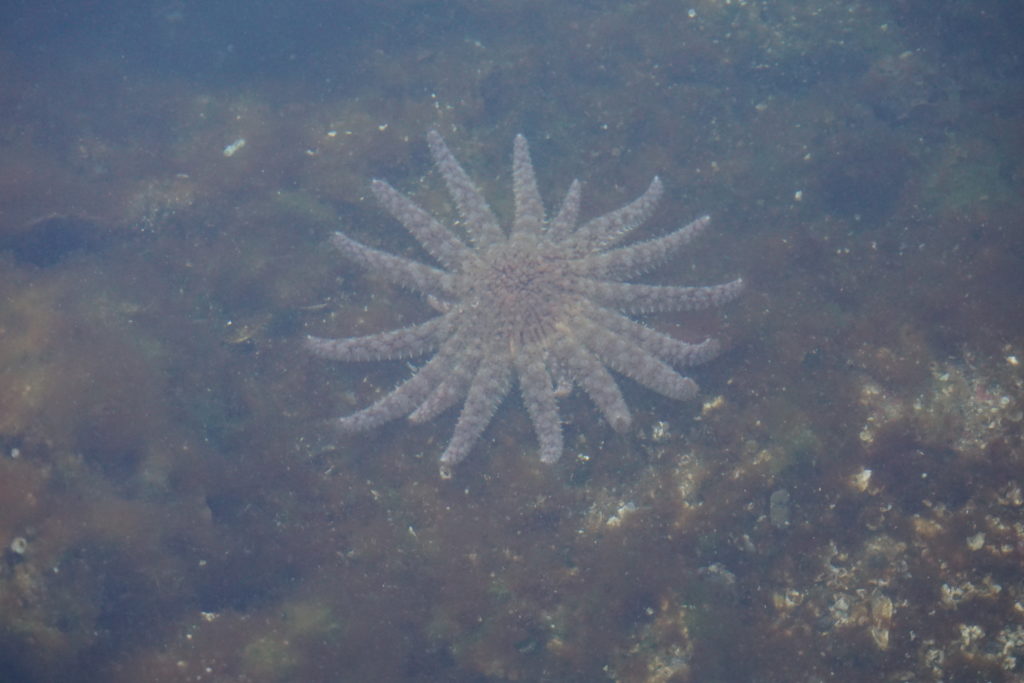

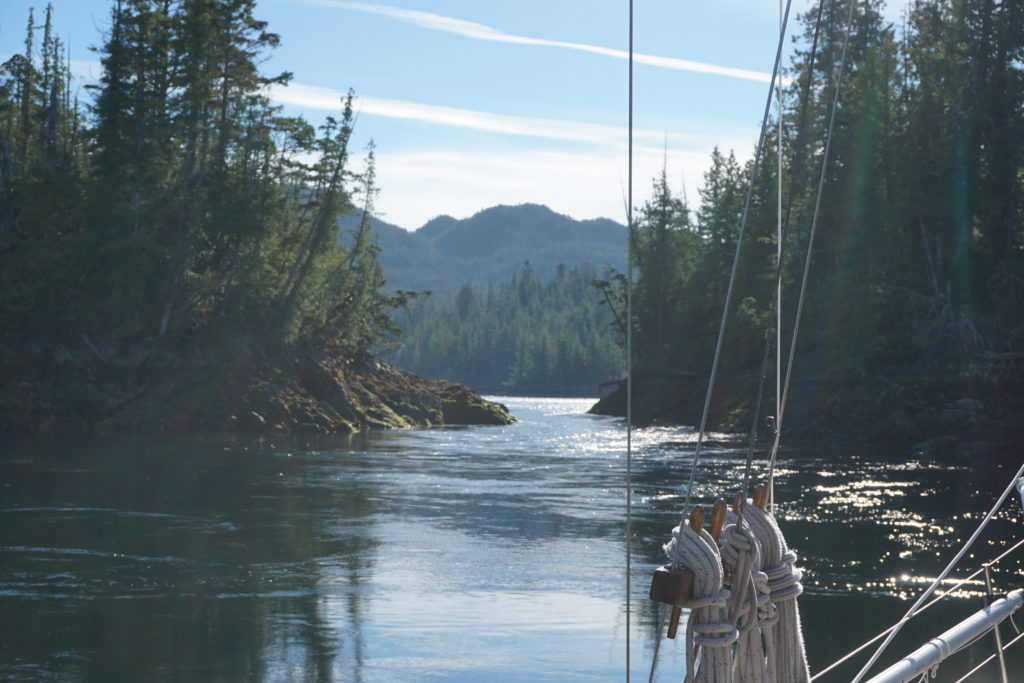
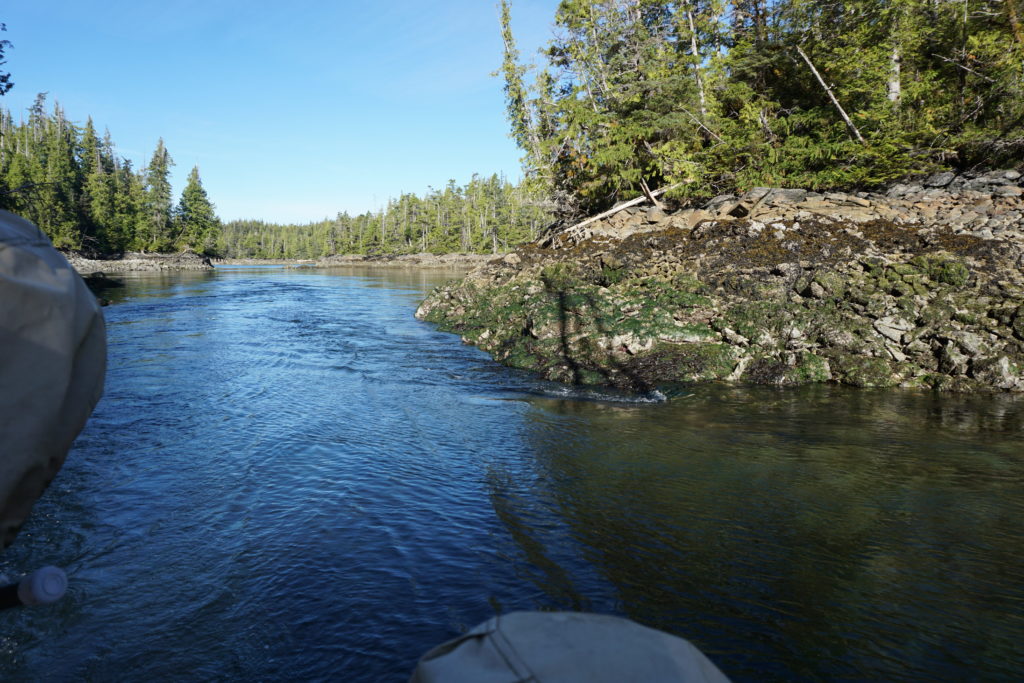

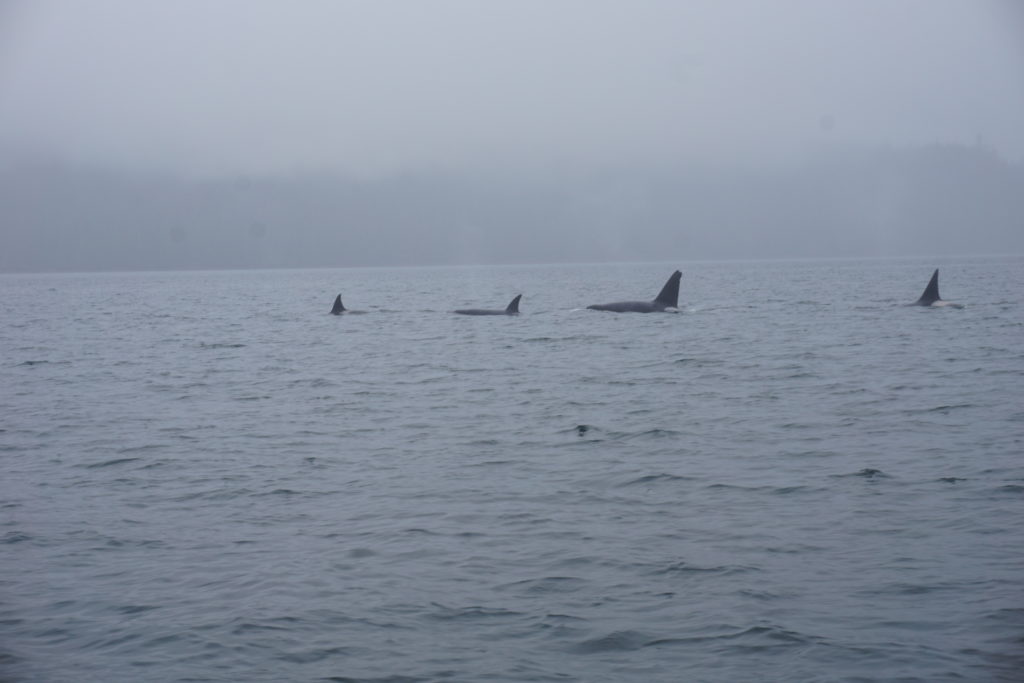
 Sea Otter, Tlevak Narrows. These curious guys dive when you get within 50-100 feet and would be some of the most photogenic if I had the right lens. I don’t remember the sea otters on Vancouver Island being so shy, maybe I’ll get better pics in a couple weeks.
Sea Otter, Tlevak Narrows. These curious guys dive when you get within 50-100 feet and would be some of the most photogenic if I had the right lens. I don’t remember the sea otters on Vancouver Island being so shy, maybe I’ll get better pics in a couple weeks.
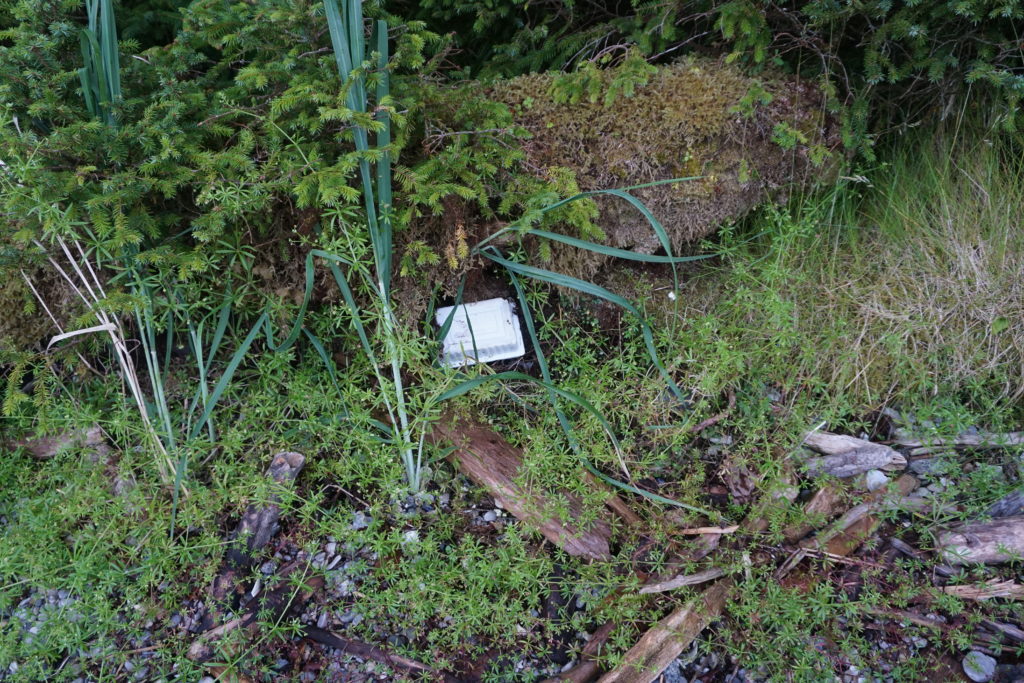 Tofu Container, Coronation Island moss forest. This elusive creature was spotted well above the high tide line, deep in the mysterious boundary between the shore and the forest. Actually, it struck me as quite ironic. As a quasi-vegan (what’s that mean? I don’t know) I eat tofu as a way to lower my impact on the environment. But here’s the plastic evidence in front of me, there are no easy answers.
Tofu Container, Coronation Island moss forest. This elusive creature was spotted well above the high tide line, deep in the mysterious boundary between the shore and the forest. Actually, it struck me as quite ironic. As a quasi-vegan (what’s that mean? I don’t know) I eat tofu as a way to lower my impact on the environment. But here’s the plastic evidence in front of me, there are no easy answers. Sigmund the Jib Furler Serpent. You’ve maybe seen him before in a post, he came on board in Astoria in 2015. His jib job is to watch for dangers such as aids to navigation that may suddenly jump into your path. Like those major channel marker buoys on the Columbia River for example. Long story. Sigmund almost went overboard last year, it was a close thing. He may have been drinking at the time but he’s OK now.
Sigmund the Jib Furler Serpent. You’ve maybe seen him before in a post, he came on board in Astoria in 2015. His jib job is to watch for dangers such as aids to navigation that may suddenly jump into your path. Like those major channel marker buoys on the Columbia River for example. Long story. Sigmund almost went overboard last year, it was a close thing. He may have been drinking at the time but he’s OK now.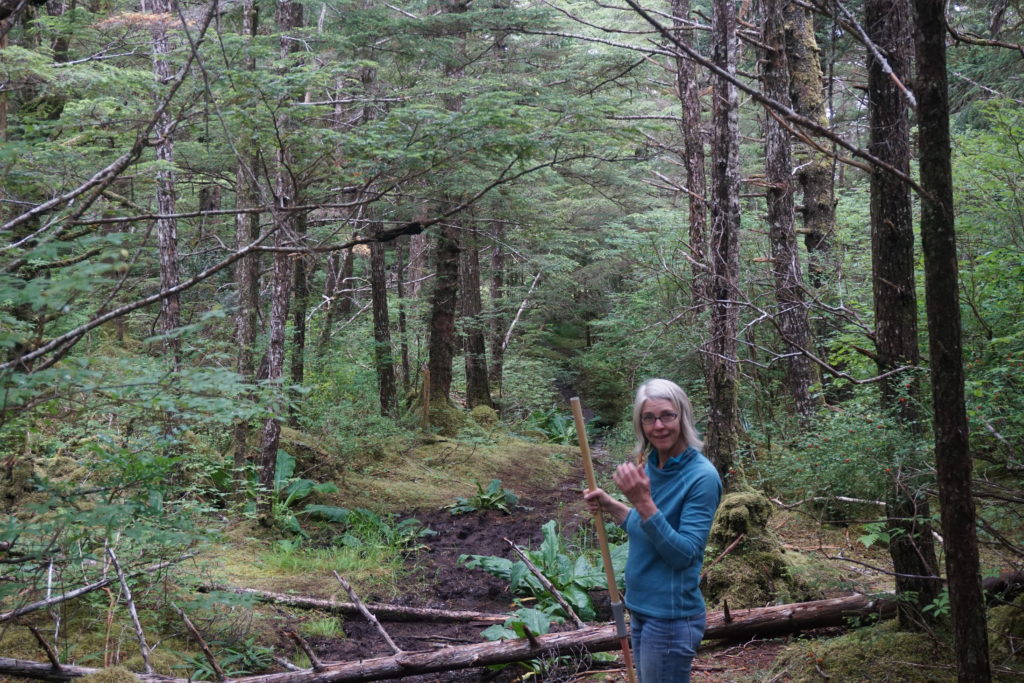 Possibly evil witch beckoning me further into the forest. She said she had a house made of ginger bread and sugar frosting. Sure she was beautiful but something in her eyes was freaky weird. I told her I had an allergy to ginger and that I thought I heard my mama calling me home. I didn’t walk the other way, I ran.
Possibly evil witch beckoning me further into the forest. She said she had a house made of ginger bread and sugar frosting. Sure she was beautiful but something in her eyes was freaky weird. I told her I had an allergy to ginger and that I thought I heard my mama calling me home. I didn’t walk the other way, I ran.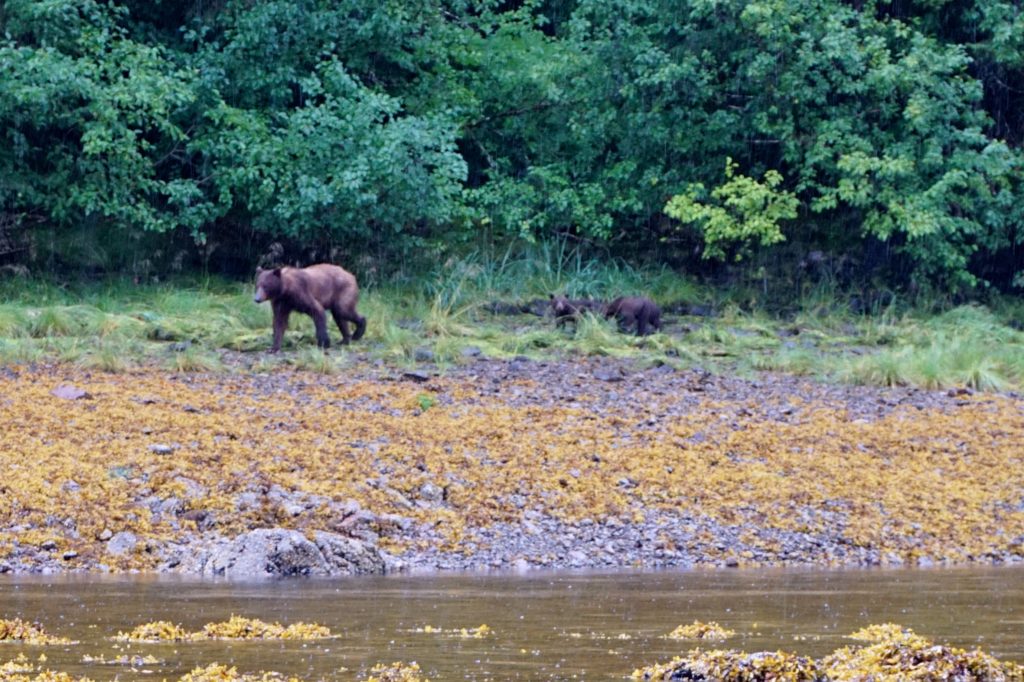 Grizzly mama and cubs, Pavlof Harbor. These guys were about 100′ away from where we were rowing our inflatable. We had seen an abandoned salmon on the rocky shore just laying there for like a half hour, but less than 1 minute before the bears got there an eagle swooped down and flew off with it. Poor bears sniffed around and around that spot. Mama’s looking a little thin I think? I dunno.
Grizzly mama and cubs, Pavlof Harbor. These guys were about 100′ away from where we were rowing our inflatable. We had seen an abandoned salmon on the rocky shore just laying there for like a half hour, but less than 1 minute before the bears got there an eagle swooped down and flew off with it. Poor bears sniffed around and around that spot. Mama’s looking a little thin I think? I dunno.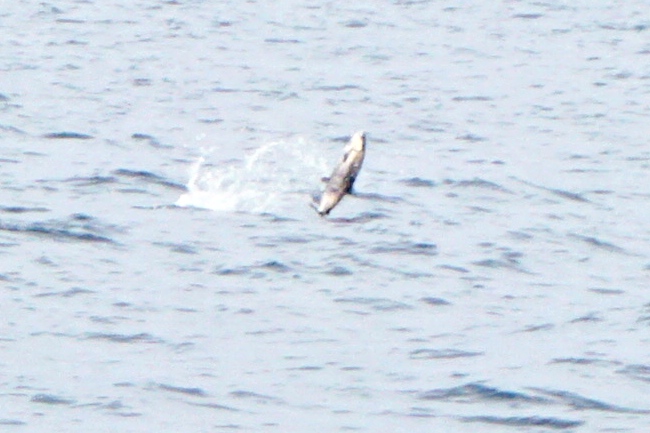
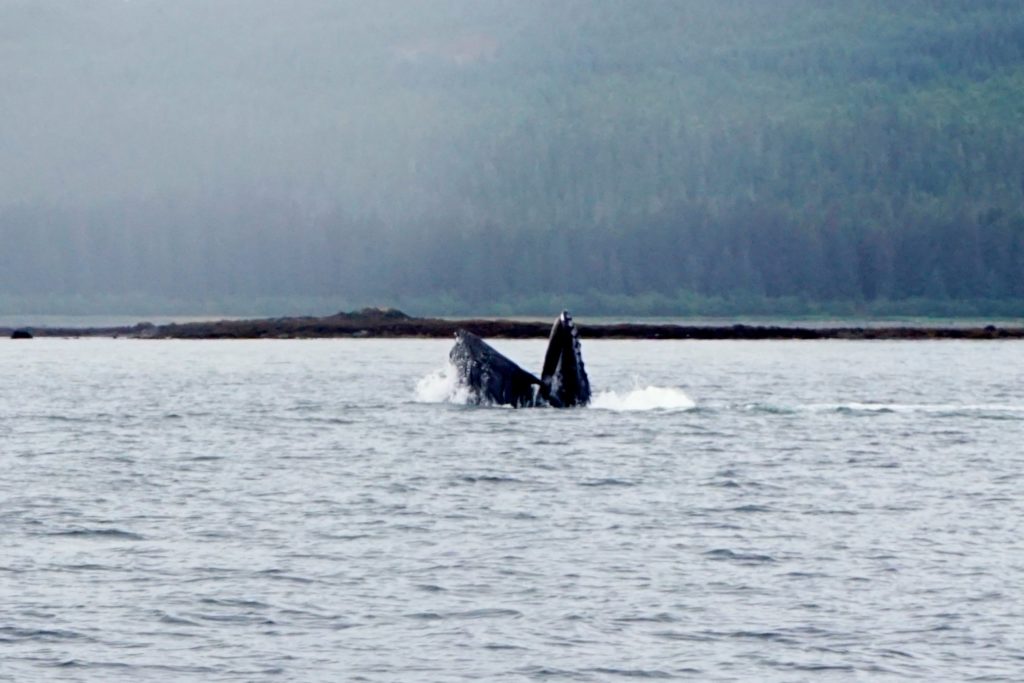 Humpback feeding in Icy Strait. Might jaws of baleen! Humpbacks will get their own blog post soon.
Humpback feeding in Icy Strait. Might jaws of baleen! Humpbacks will get their own blog post soon.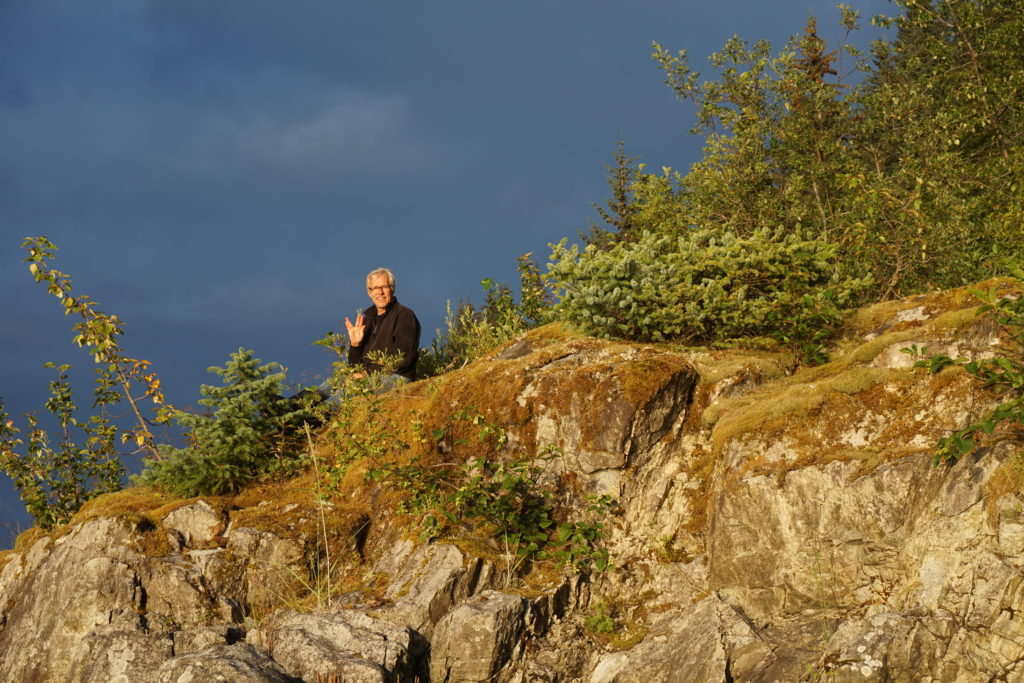 The Guru of Wachussett Inlet, Glacier Bay. He told me “live long and prosper”, so I’ve got that going for me.
The Guru of Wachussett Inlet, Glacier Bay. He told me “live long and prosper”, so I’ve got that going for me.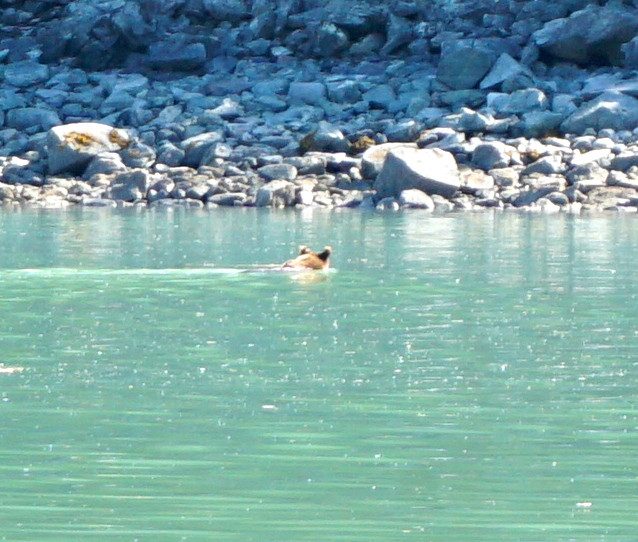
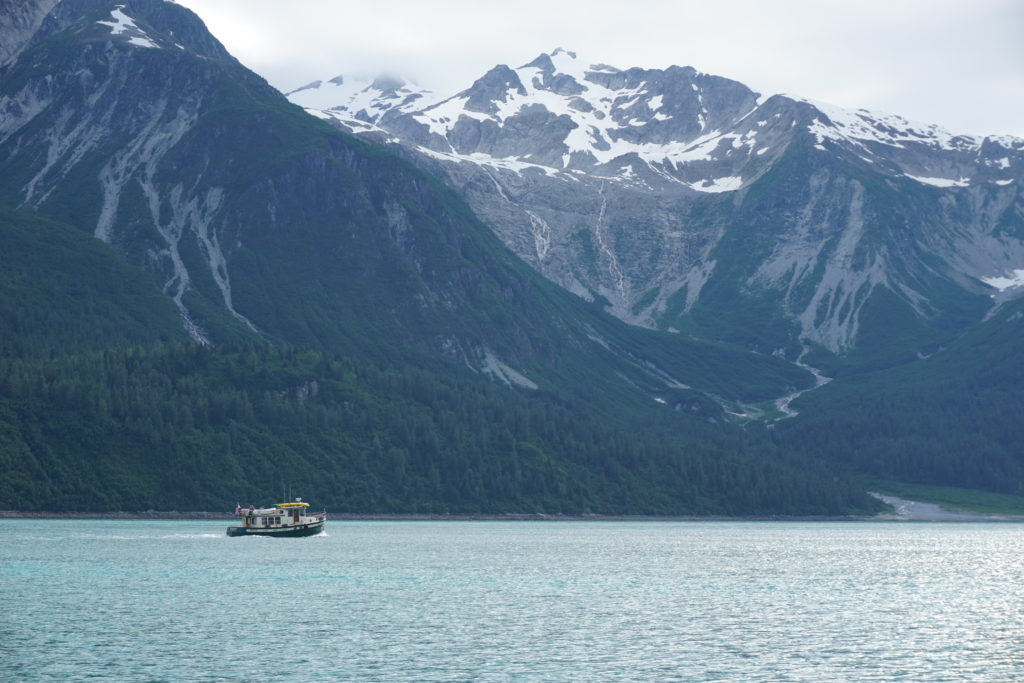
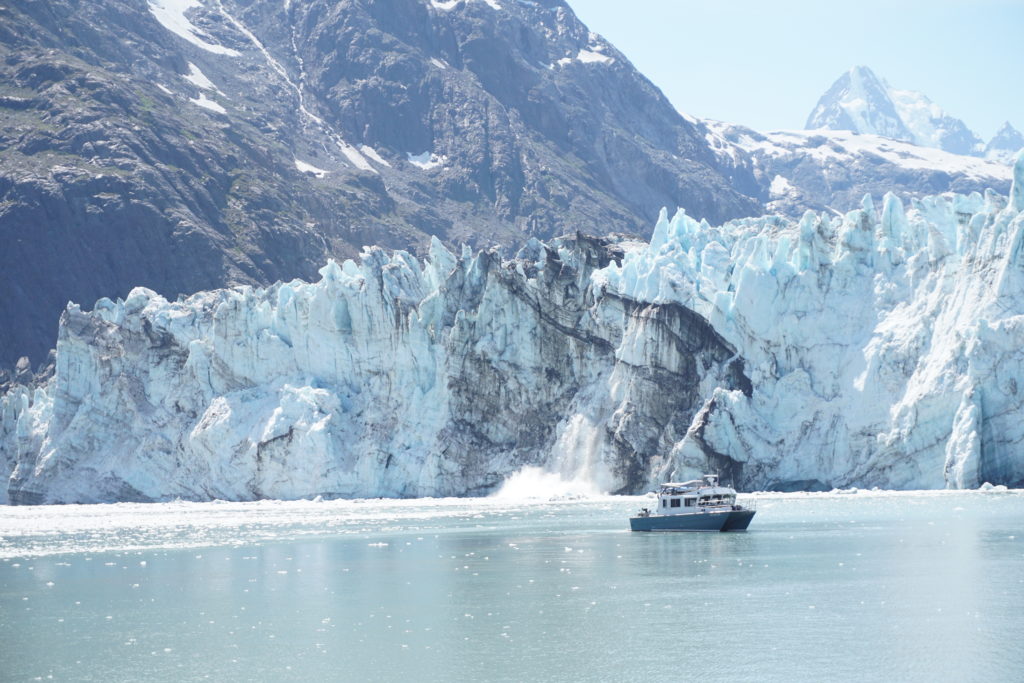
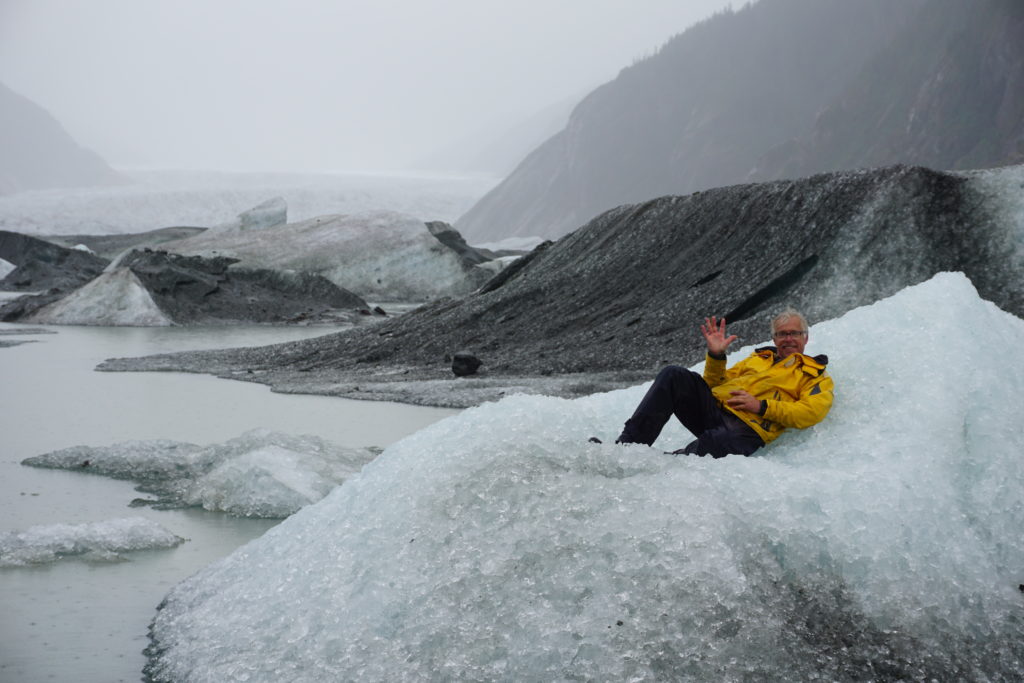

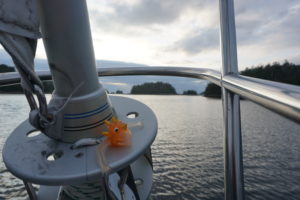
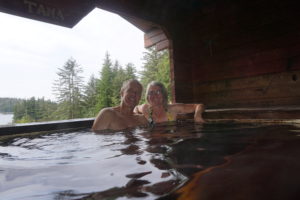
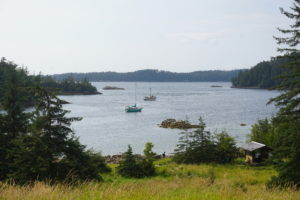
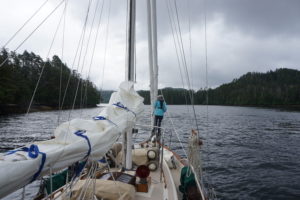
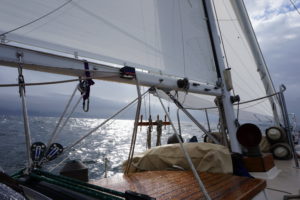
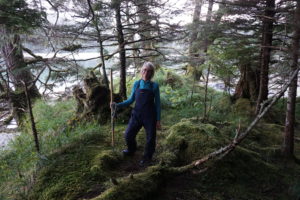
 Thar be the nipples!
Thar be the nipples!